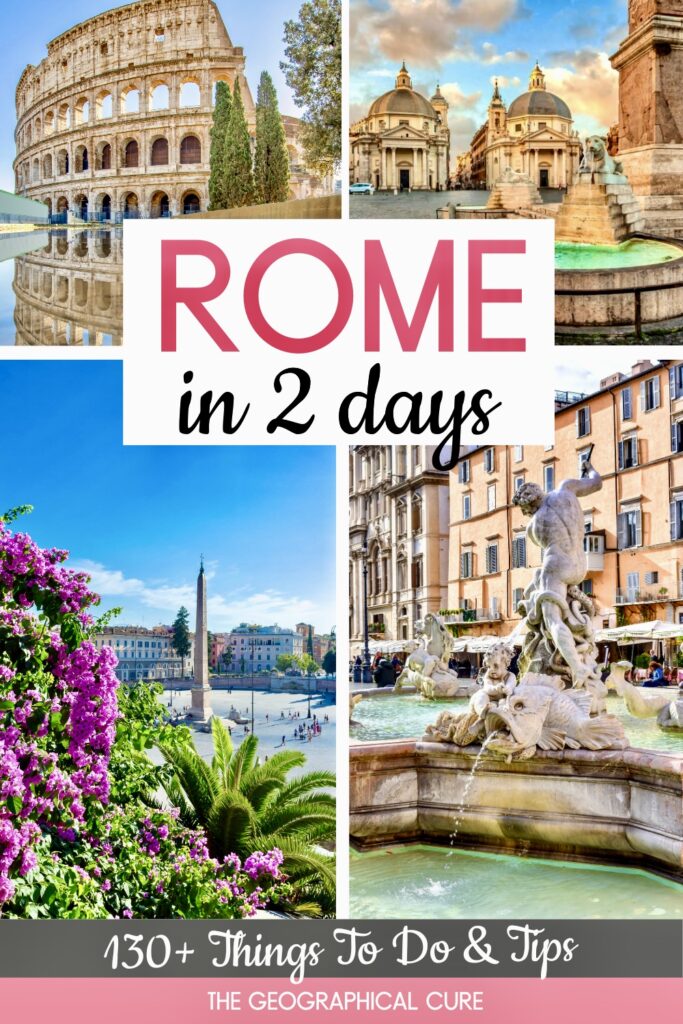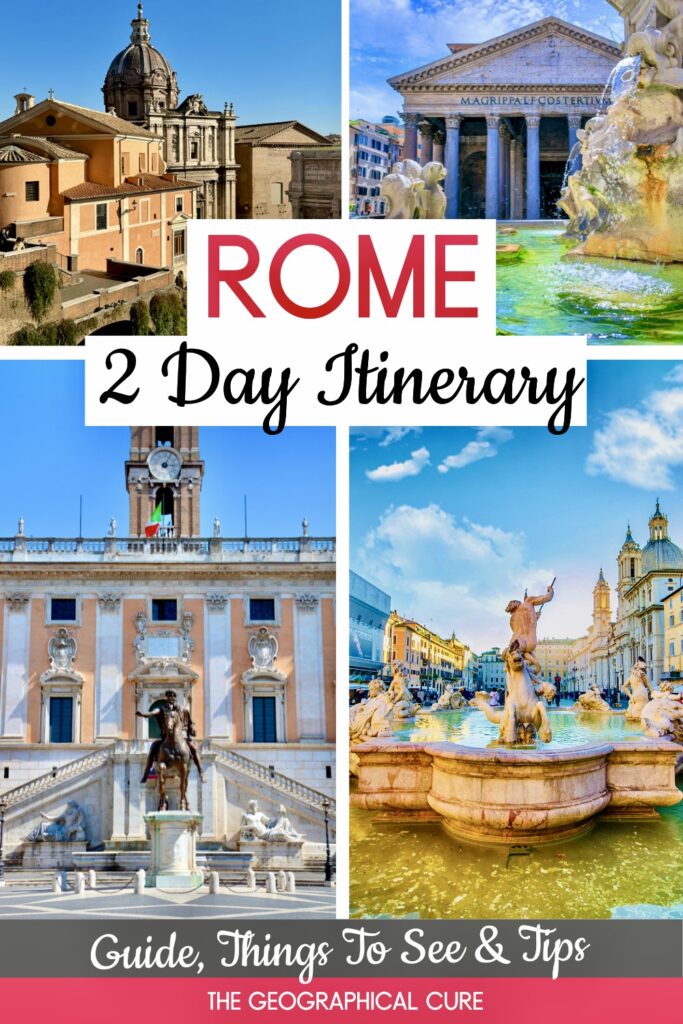Rome is a magnificent tangled urban forest. History unfolds at every turn and the aroma of fresh espresso lingers in the air.
This city’s remarkable tapestry of ancient ruins, Renaissance art, and vivacious street life is always alluring, if a tad chaotic. But with a well-planned itinerary, you’ll be able to soak in the grandeur of Rome’s iconic landmarks.
Whether you’re tossing a coin into the Trevi Fountain, marveling at the wonders of the Vatican, or savoring a slice of authentic Roman pizza, this 2 days in Rome itinerary is packed with unforgettable experiences.
You’ll discover the 2,000 year old city one cobblestone street at a time.
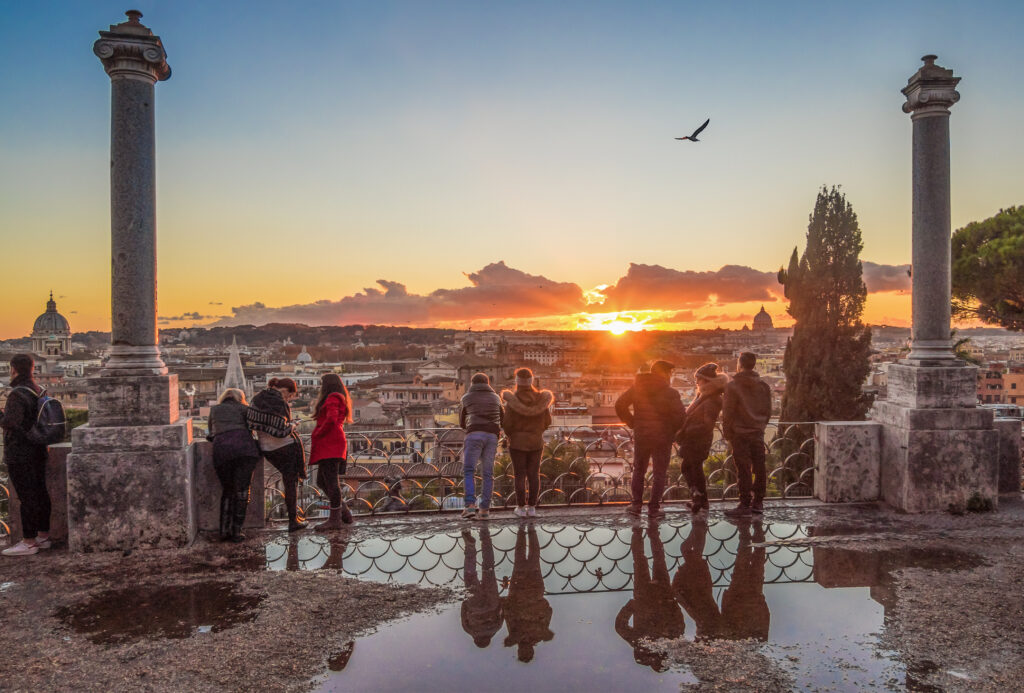
Snapshot Of 2 Days In Rome Itinerary
Here’s a quick glance of what you can see in 2 days in Rome. I call it the Rome in a rush itinerary.
Day 1:
- AM: Piazza del Popolo, Spanish Steps, Trevi Fountain, Pantheon, Sopra Minerva, Church of St. Louis of the French, Piazza Navona
- PM: Colosseum, Roman Forum & Palatine Hill, Santa Maria Maggiore, Monti neighborhood
Day 2:
- AM: Vatican, St. Peter’s Basilica
- PM: Vittoriano, Capitoline Museums (alternative: Borghese Gallery) Mouth of Truth, Jewish Ghetto, Trastevere, Trastevere food tour
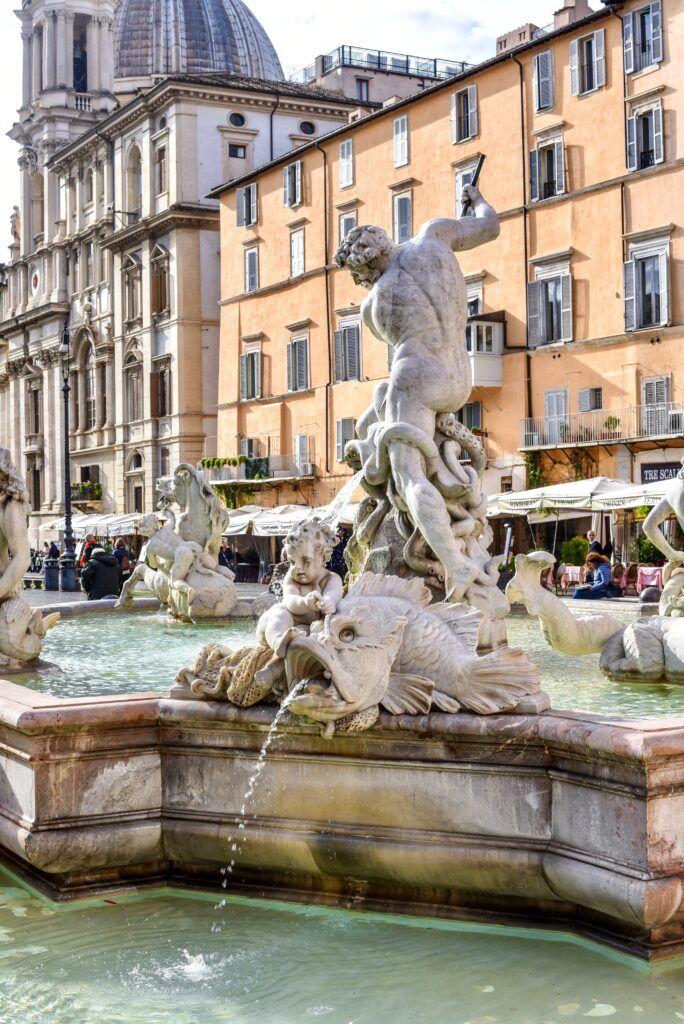
Top Tours & Tickets You’ll Need
If you only have 2 days in Rome, you’ll need to pre-book skip the line tickets and possibly some tours, depending on your travel style.
Tickets you’ll need include:
- timed entry Colosseum ticket
- ticket for the Roman Forum and Palatine Hill
- Vatican ticket
- Capitoline Museums ticket
- St. Peter’s dome ticket
If you’re a first timer in Rome or simply want to maximize your sightseeing efficiency, you may want to book a couple tours. This will typically ensure you don’t miss any highlights. For example, this is a good way to see the imperial sites and the Vatican.
- tour of Colosseum, Forum, and Palatine Hill
- private imperial ruins tour with PhD
- Vatican Museums tour
- private Vatican tour
- Trastevere food tour
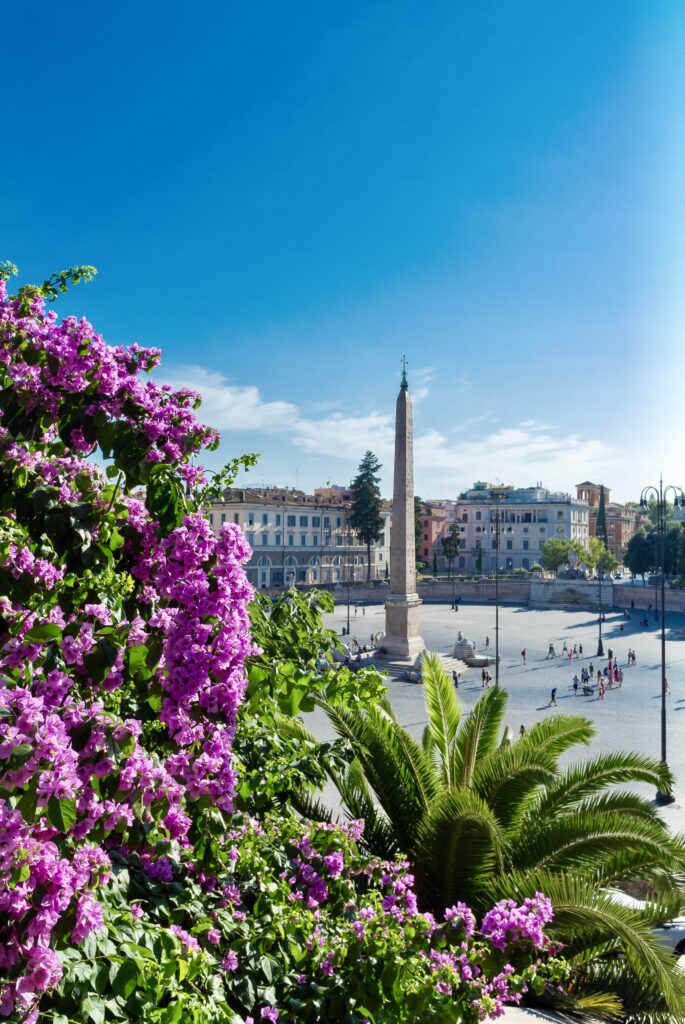
2 Days In Rome Itinerary
One day 1, you’ll start in the north and work your way through the historic center, ending at the imperial sites.
Piazza del Popolo
Start your day in the delightfully carefree Piazza del Popolo.
This is the “People’s Square,” known for its Neo-classical architecture that provides a sense of grandeur and symmetry. In the center is an Egyptian obelisk, brought to Rome by Augustus after he defeated Egypt.
Piazza del Popolo is flanked by two almost identical domed churches – Santa Maria dei Miracoli and Santa Maria in Montesanto. But the one you’ll want to visit, just around the corner, is the Baroque Basilica of Santa Maria del Popolo.
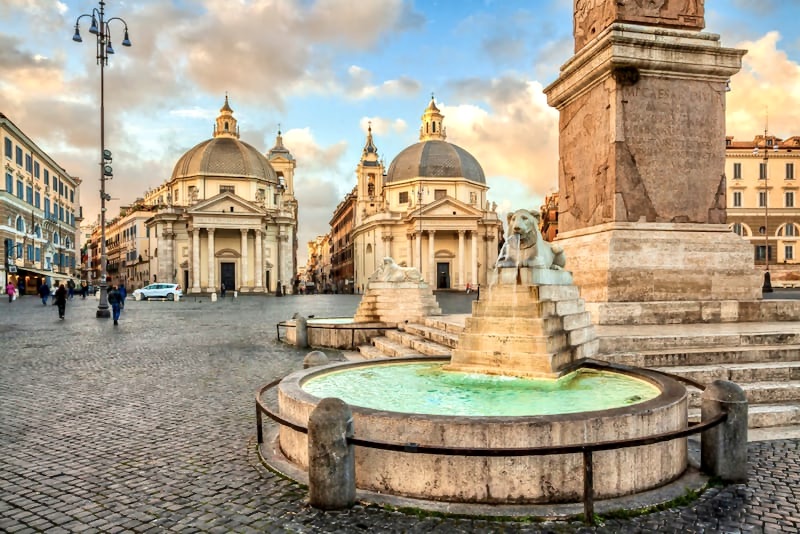
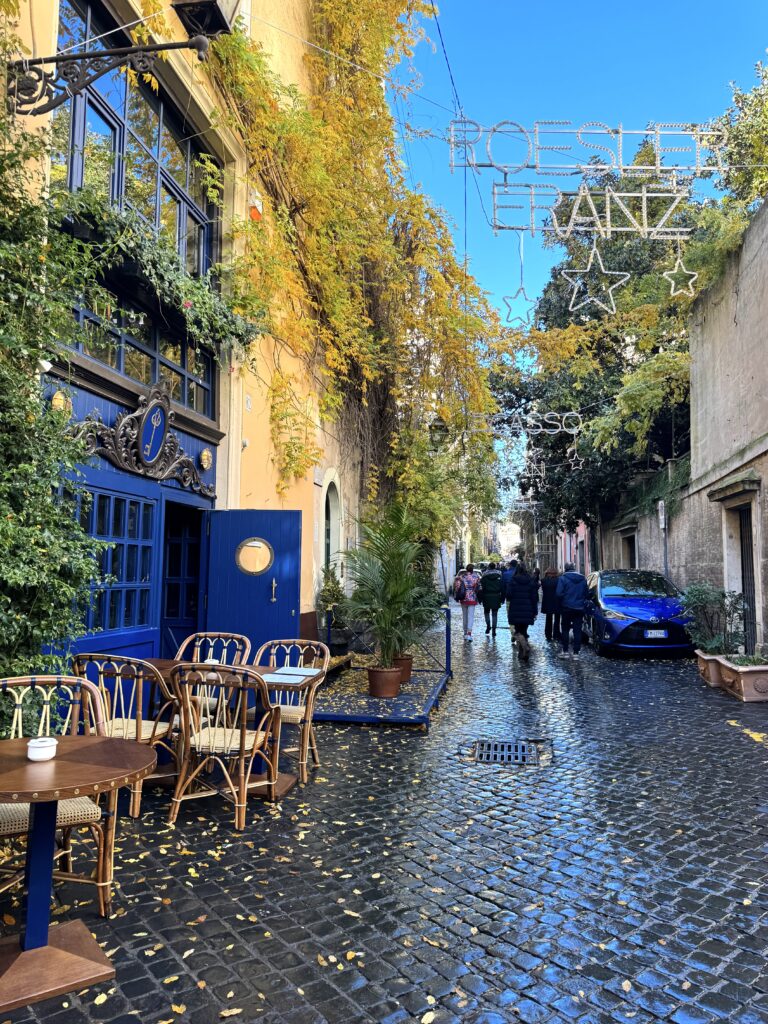
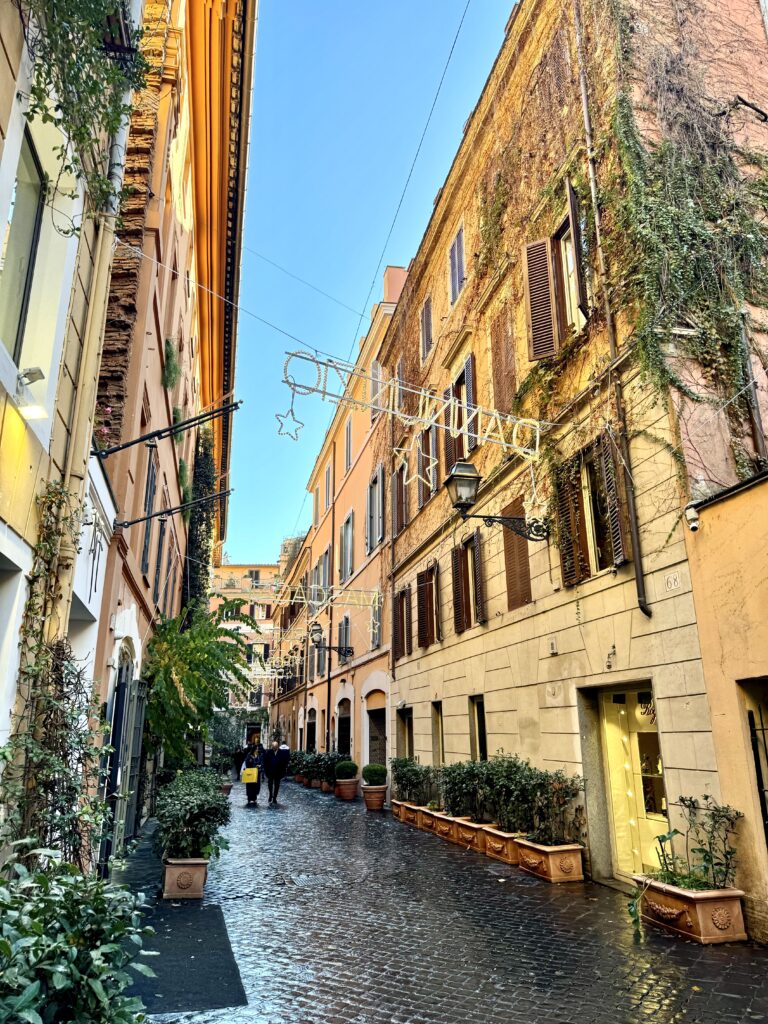
You’ll find artworks by the greatest artists of the day — Caravaggio, Sebastian del Piombo, Pinturicchio, and Bernini.
When you’re done admiring the art, head up to the Pincio Terrace. You’ll get a bird’s eye view of Piazza del Popolo and St. Peter’s Basilica.
From there, take a stroll down Via Margutta, which is one of Rome’s prettiest streets bar none. After that, you’ll arrive at the Spanish Steps.
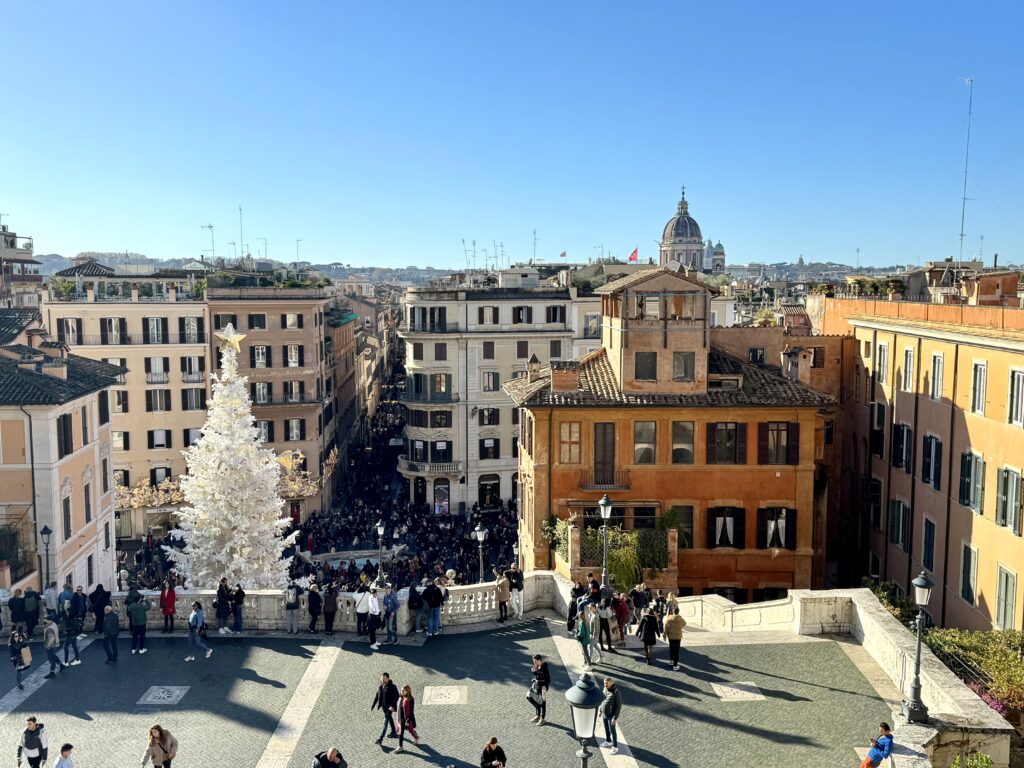
Spanish Steps
The Spanish steps connect Piazza Trinità dei Monti at the top to the Piazza di Spagna at the bottom.
You’ll walk down 135 steps in a mix of curves, straight flights, vistas, and terraces.
At the bottom, you’ll find a fountain designed by Bernini and his father. And you can also walk down Rome’s most famous shopping street, Via Condotti. Be forewarned, it’s usually packed with people.
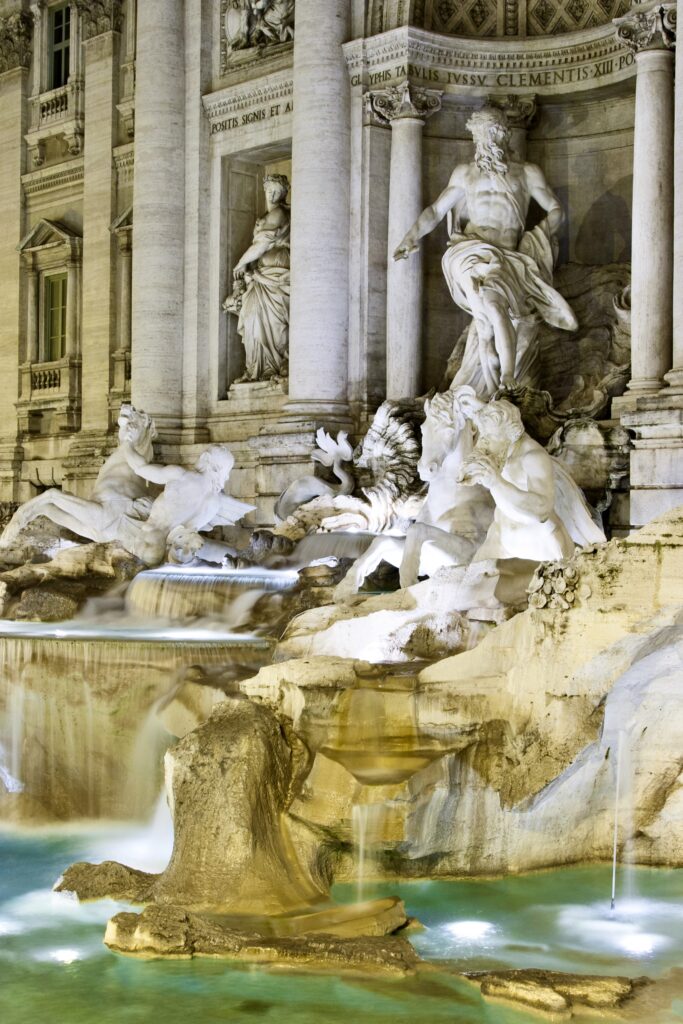
Trevi Fountain
From the Spanish Steps, head towards the iconic Trevi Fountain, a grand masterpiece of Baroque architecture. Designed by the renowned Italian architect Nicola Salvi, this magnificent fountain was completed in 1762.
Standing at an impressive 85 feet high and 65 feet wide, it’s one of Rome’s most breathtaking sights.
At the heart of the fountain is the majestic figure of Oceanus, the God of all water. He majestically rides a shell-shaped chariot, drawn by sea horses and led by Tritons, creating a scene of dynamic beauty and power.
If you want to see it up close, you’ll have to join the huge crowds swarming it and wait a bit to get your shot.
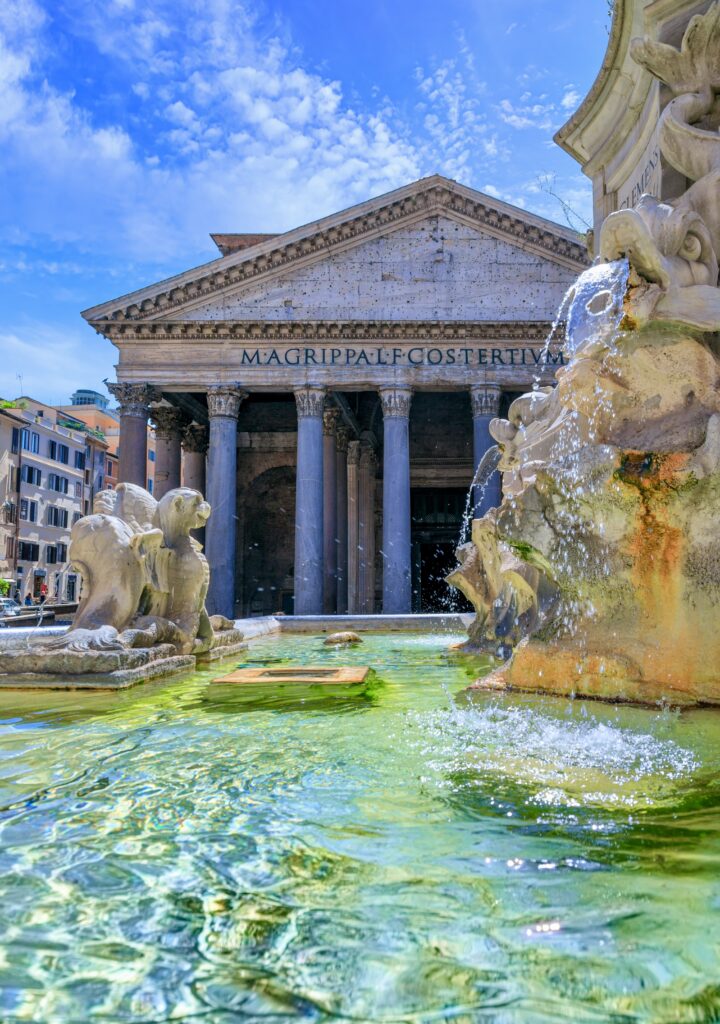
Pantheon
Next, walk a few minutes to Rome’s best preserved ancient monument, the Pantheon. It’s the only building in Rome in continuous use since its construction.
The Pantheon was a Roman temple dedicated to all gods. The original was built in 27 BC by Marcus Agrippa. But, after a fire, it was later rebuilt by Hadrian.
Walk into the portico, a forest of 16 enormous columns. Once inside, stand under the solemn dome. Engineers still marvel at its precision and beauty.
At the top is a 300 foot oculus, the only source of natural light. You’ll also find tombs of famous Romans, including the Renaissance artist Raphael.
>>> Click here to book a Pantheon ticket
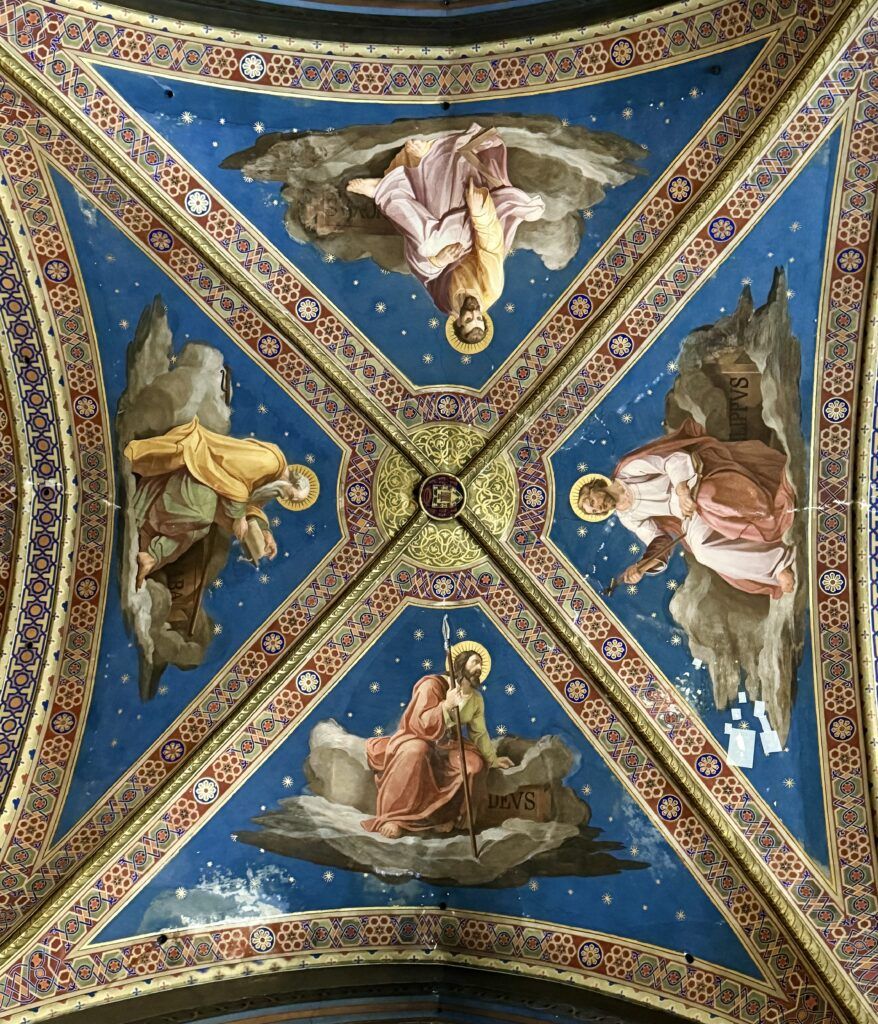
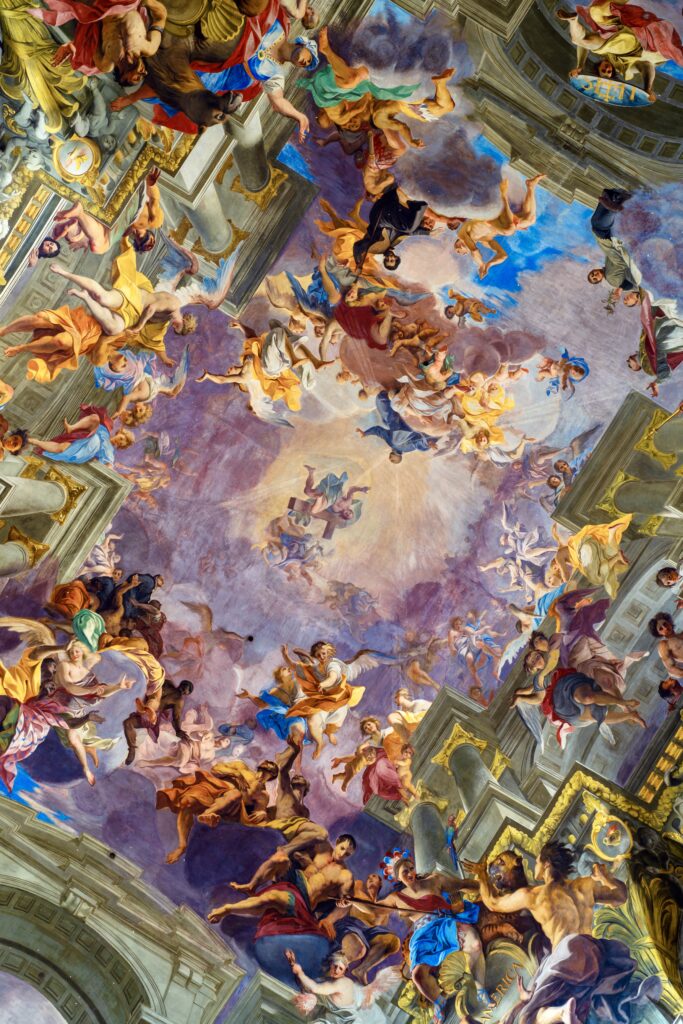
Visit A Church
Take a few minutes to pop into one of Rome’s beautiful churches. There are three that are very close to the Pantheon.
The Sopra Minerva is the only Gothic church in Rome, founded in the 7th century. Outside is a strange sculpture, which combines an elephant and an obelisk. It was designed by Bernini.
Inside, it’s a mini art museum. There are works by Bernini and Michelangelo. The Carafe Chapel has stunning frescos by Filipino Lippi, a student of Botticelli.
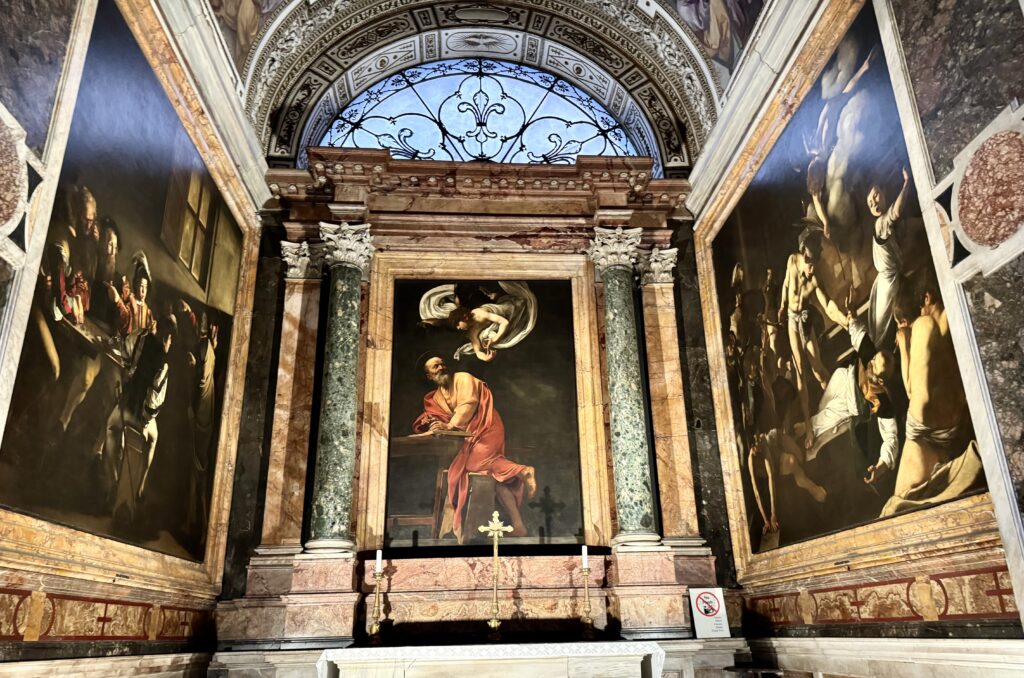
Another must see is St. Ignatius. The church is a riot of Baroque illusions. Stand in the middle of the nave and look up at the ceiling fresco — which has been recently restored and just glows.
Caravaggio fans should head to the Church of St. Louis of the French. This is a Renaissance building with Baroque icing.
The church’s highlight is the Contarelli Chapel in the back left corner. It’s decorated with three in situ paintings by Caravaggio, which made the artist an overnight sensation.
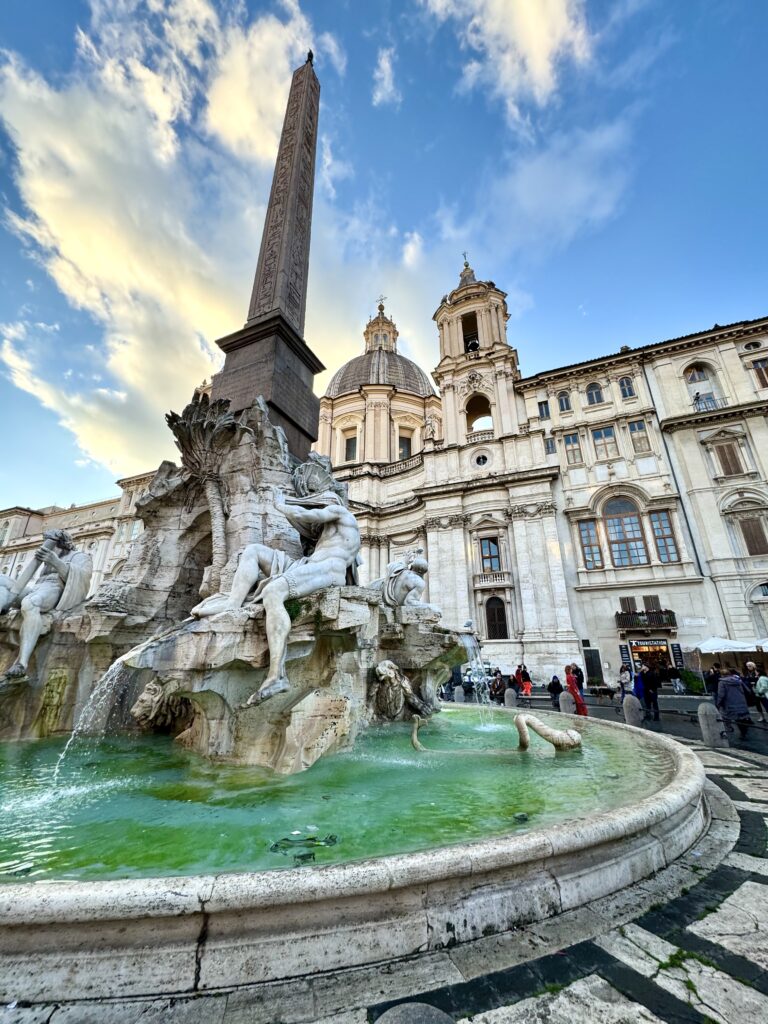
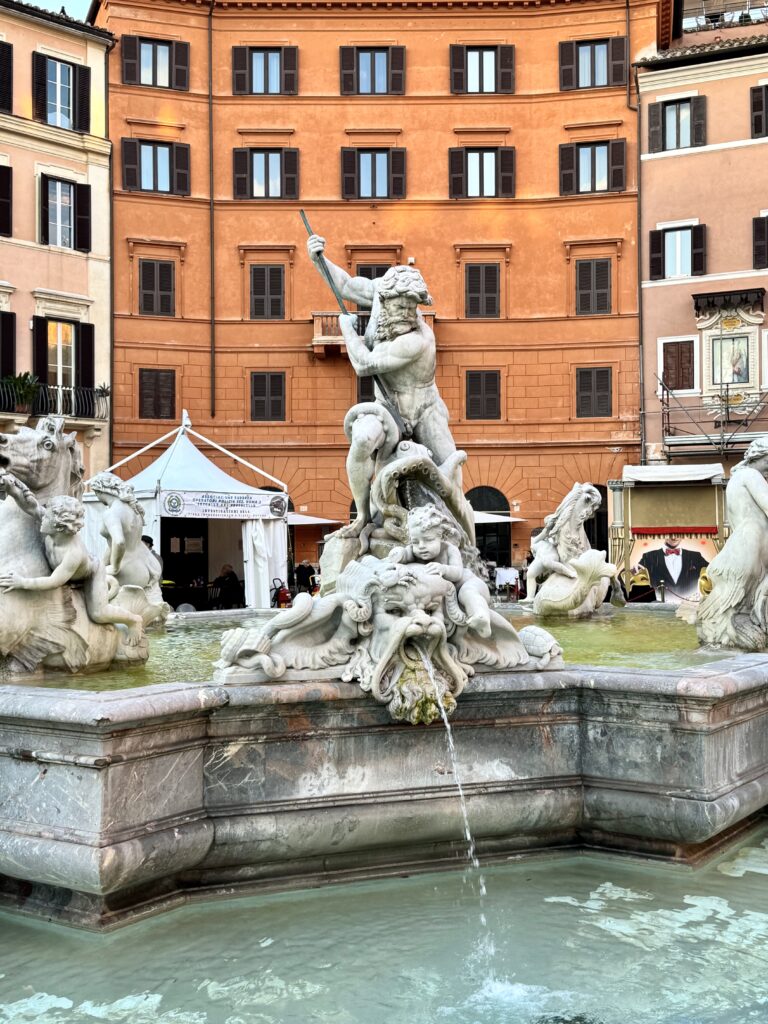
Piazza Navona
Then head to Piazza Navona, the square of fountains. It’s a gorgeous place flanked by ochre and tangerine buildings that dates from the time of Domitian.
Admire the fountains by Bernini and Giacomo de la Porta. Go inside the Borromini-designed Church of Sant Agnese. It’s an exquisite little Baroque jewel box.
This is a good time to break for lunch. I wouldn’t advise eating in the square itself. But there are some good places in the side streets.
On my most recent visit, I paused at Cafe St. Eustache for a coffee. And had lunch at Ginger. It’s a chic eatery with paninis, artisanal bowls, and pasta.
You can also try Bar del Fico (bar and bistro) or La Ciambala (Michelin delights).
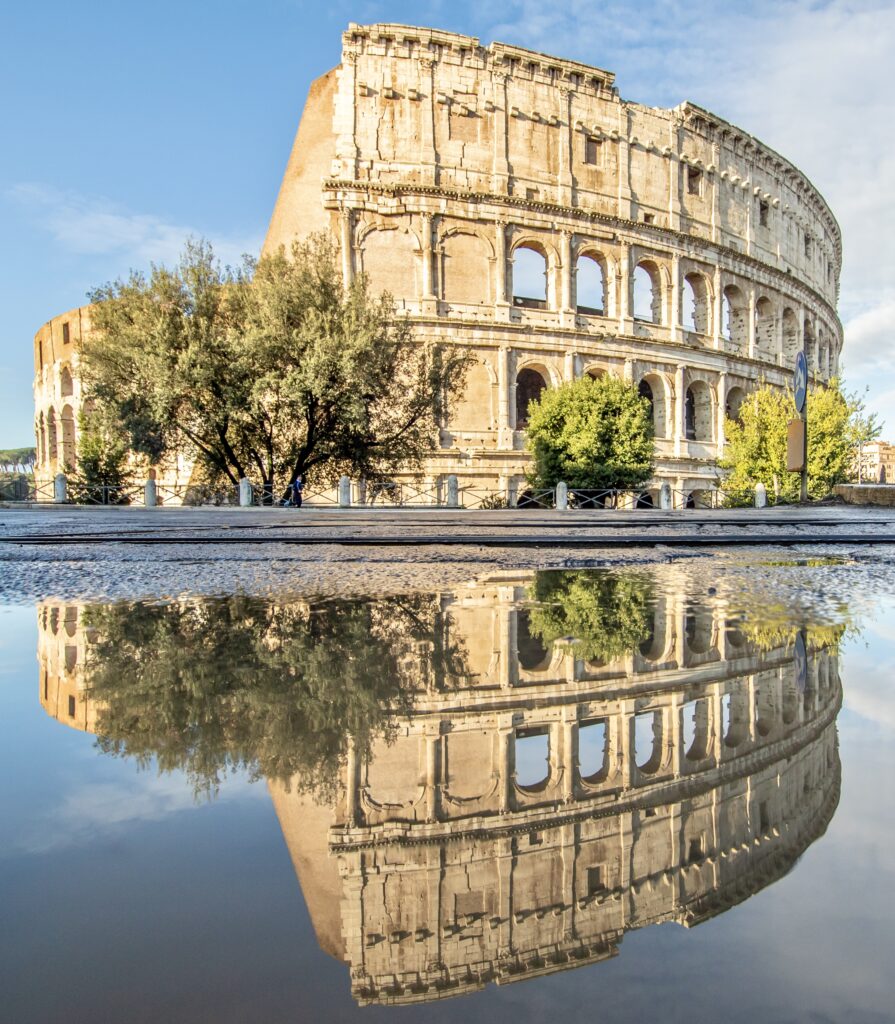
Colosseum
After lunch, it’s time to hit the imperial sites. Start at the Colosseum, where you’ll need a timed entry skip the line ticket.
You could also book a guided tour that includes access to the underground gladiator area. I thought this was one of the most fascinating spots in the Colosseum.
The Colosseum is the most popular relic from Ancient Rome. It was built when the Roman Empire was at its peak, around 80 AD. In its glory days, the structure was white marble and painted with colorful trim.
The Colosseum was where Romans experienced theatrical violence, where gladiator and wild animals fought to the death in every conceivable scenario.
The upper levels of the Colosseum provide a sweeping view of the entire arena and a better understanding of its grand scale. From here, you can also get great views of the Roman Forum and Palatine Hill.
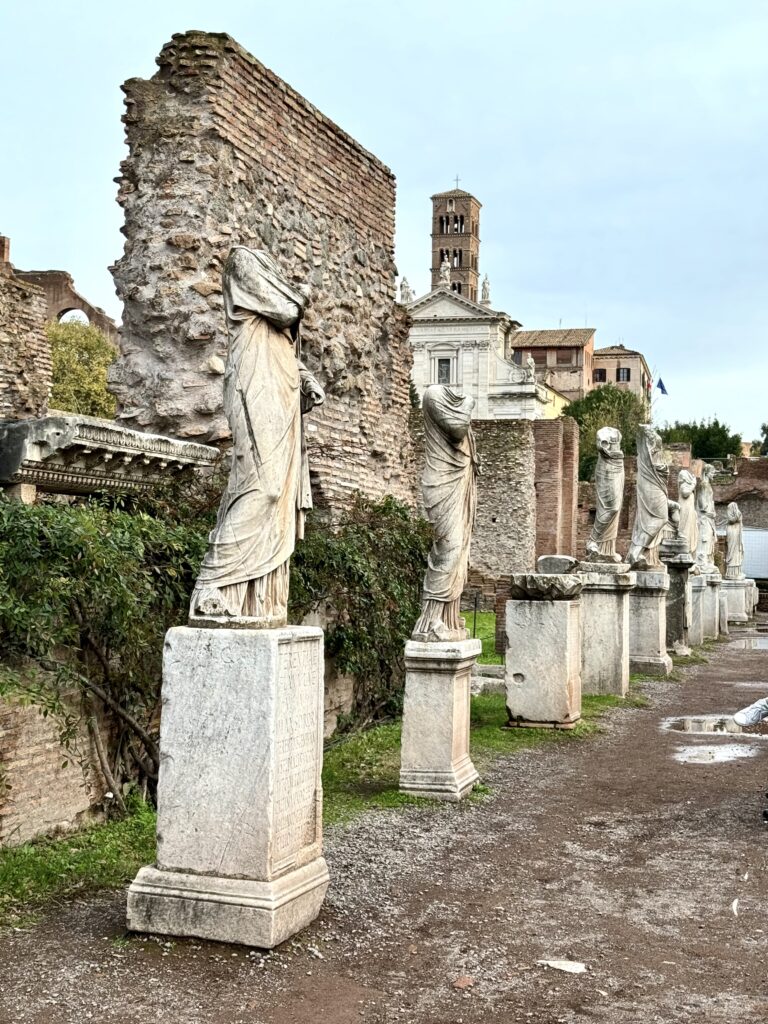
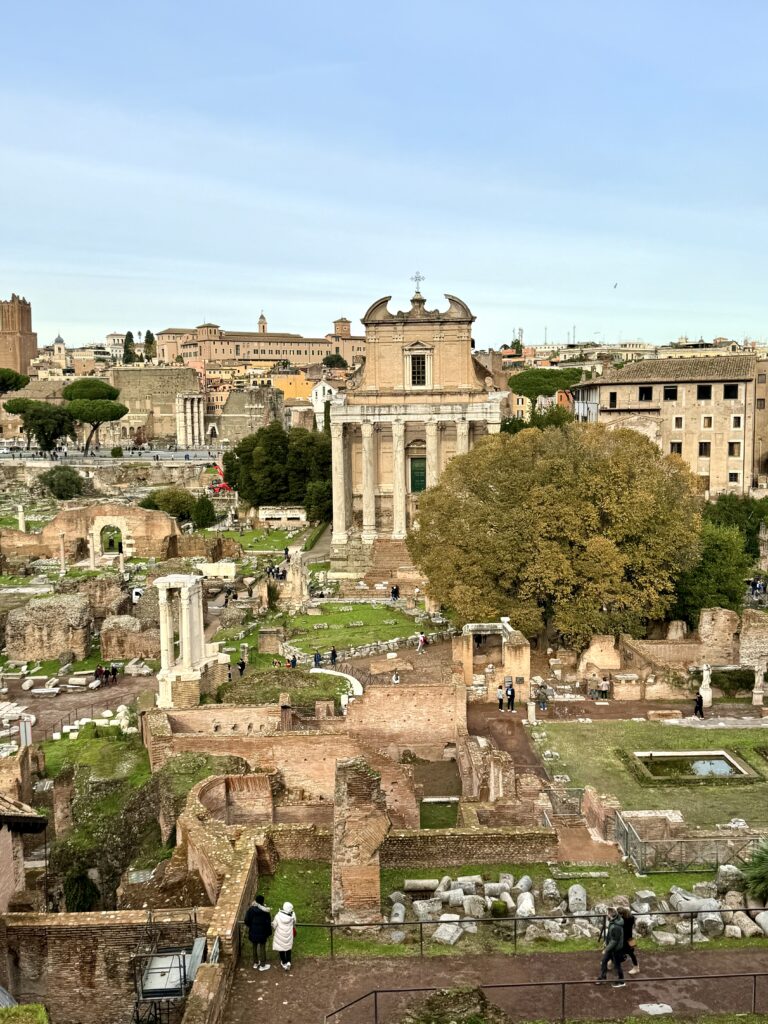
Roman Forum & Palatine Hill
The Roman Forum and Palatine Hill are organized as a single site. You’ll enter the forum at Via della Salara Vecchia, 5/6.
The best way to visit is either on a skip the line guided tour that includes the Colosseum or with your own pre-purchased skip the line ticket.
Some tickets, like the one I linked, include access to the SUPER sites. You can read more about that here. It’s well worth getting.
There will be three security checks. The guard will scan your ticket, another will match your ticket to your ID, and then you’ll go through a metal detector.
The Roman Forum is a sprawling and magnificent jumble of ruins that were once the center of public life. It served as the site of triumphal processions, elections, public speeches, criminal trials, and commercial affairs.
Key structures within the Forum include the Temple of Saturn, the Arch of Titus, the Temple of Vesta, and the Senate House.
If you have the SUPER ticket, you can also visit the Church of Santa Maria Antiqua. This Byzantine church is a treasure trove of early Christian art.
Its walls are adorned with a stunning array of frescoes from the 6th to 9th centuries, predominantly featuring the Virgin Mary. The church is dubbed the “medieval Sistine Chapel.”
If you have the SUPER ticket, you can proceed from the church through the Neronian Cryptoporticus to get to Palatine Hill. If not, follow the signs that lead you to the passage near the Arch of Titus.
I think Palatine Hill is underrated. It’s not just “extra credit” after the forum. The hill offers insights into the greatness of Rome that’s well worth the effort and not nearly as crowded as the forum.
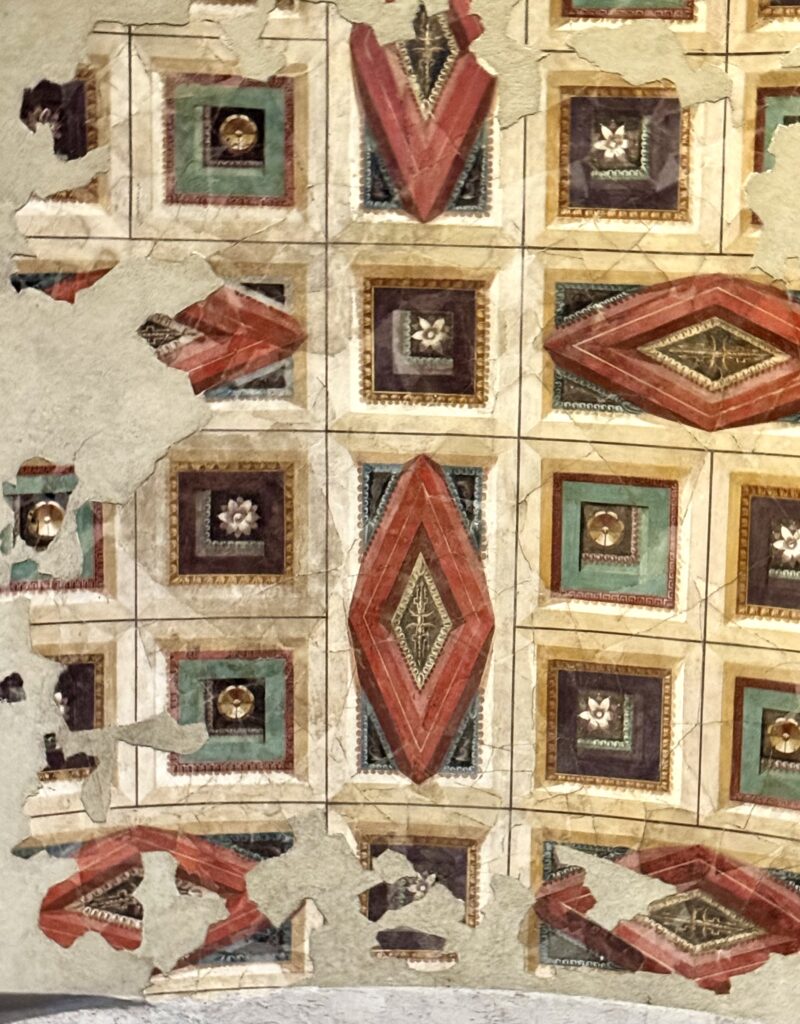
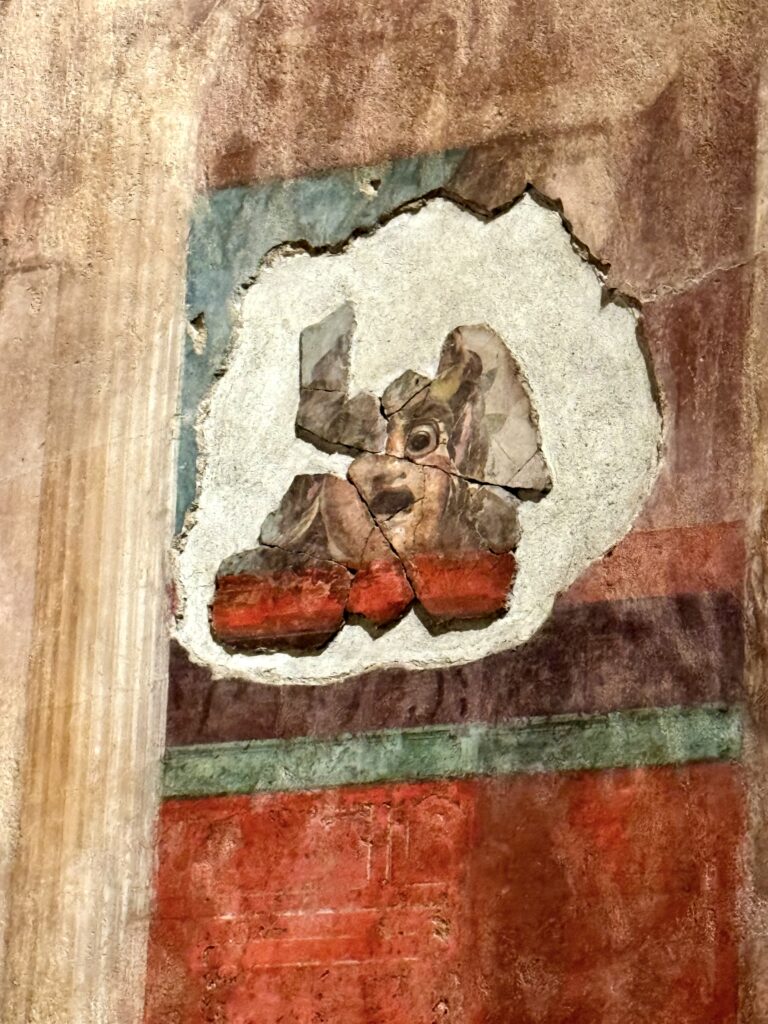
The hill is home to the House of Augustus, House of Livia, the imperial palaces, the Palatine Museum, the Huts of Romulus, Domus Transitoria, and the newly-opened Domus Tiberiana.
My favorite is the House of Augustus with its brightly colored Pompeiian frescos. Three times a day, there’s a 3D virtual reality presentation, which fills in the gaps and lets you see what the frescos looked like long ago.
Domus Tiberiana is also well worth a visit, just opening in September 2023. It’s the gigantic building with arches that you see from the Roman Forum.
In addition to striding down the gigantic hallways, you can admire a nice selection of artifacts that were found during digs. Along the way, you’ll have beautiful views over the forum.
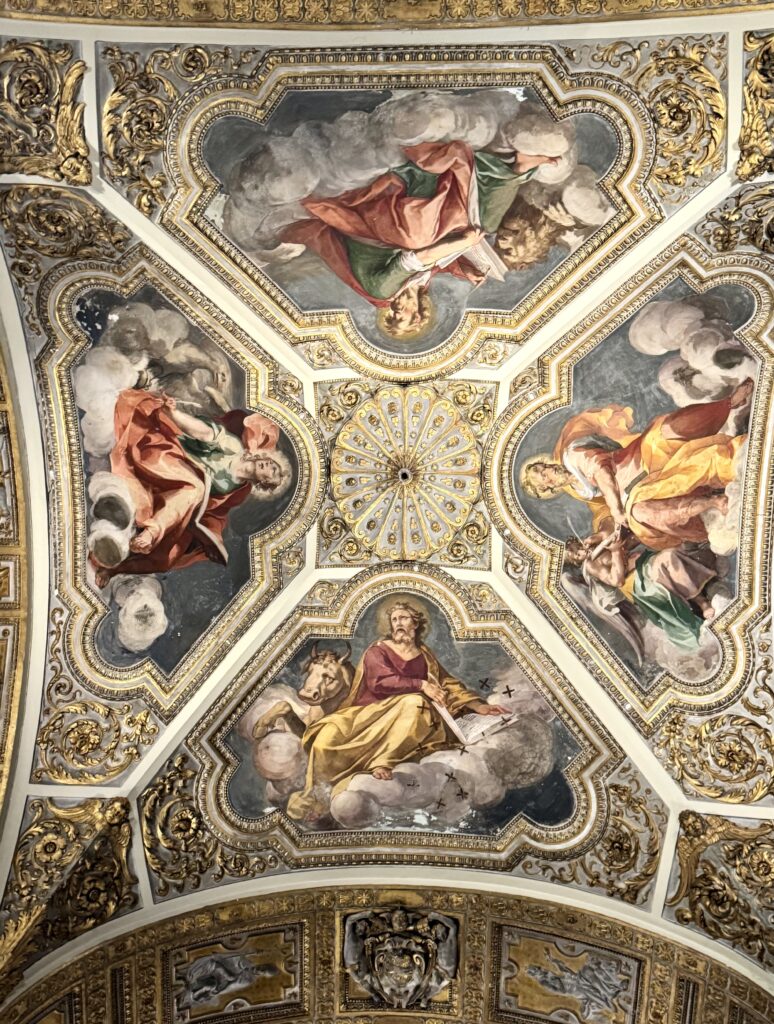
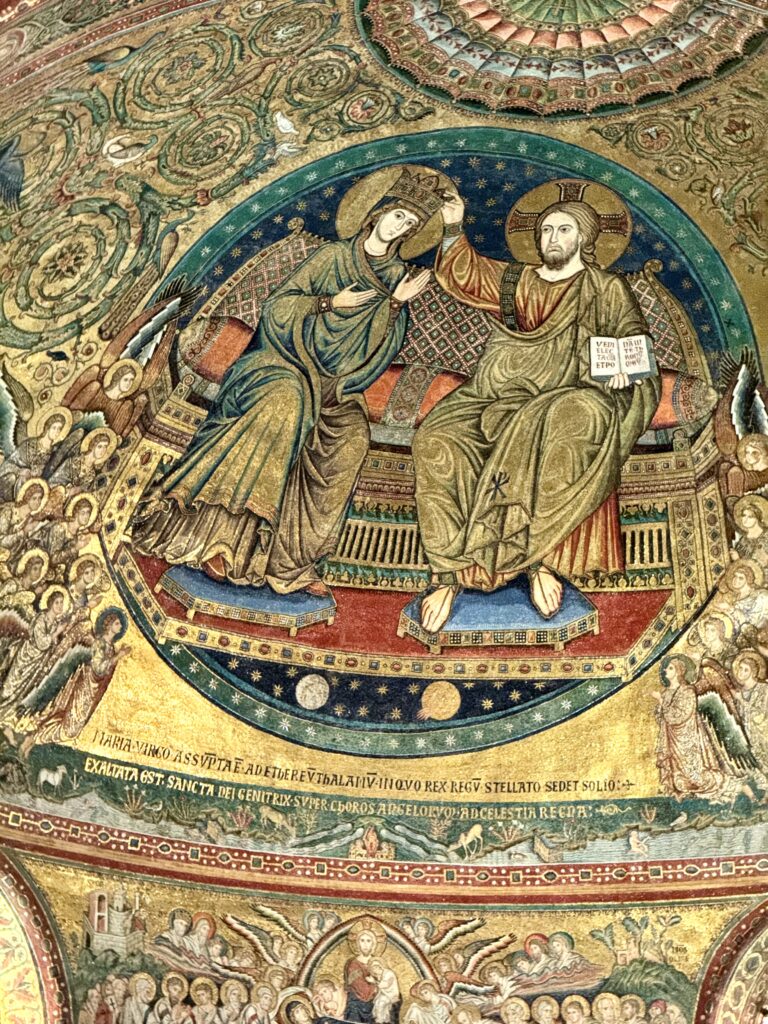
Santa Maria Maggiore
If you have any time left in your day, head to the papal Basilica of Santa Maria Maggiore in the Monti neighborhood. It’s open until 6:45 pm.
The church is one of Rome’s oldest and best preserved sacred spaces. It was build in 432 AD, just as Rome was falling.
The church’s soaring columns, gleaming marble, sparkling mosaics, and magnificent statues will astound you. Santa Maria Maggiore is just as spectacular as St. Peter’s Basilica, but without the crowds.
The highlight of the church are its colorful mosaics, some of which date back to the 5th century.
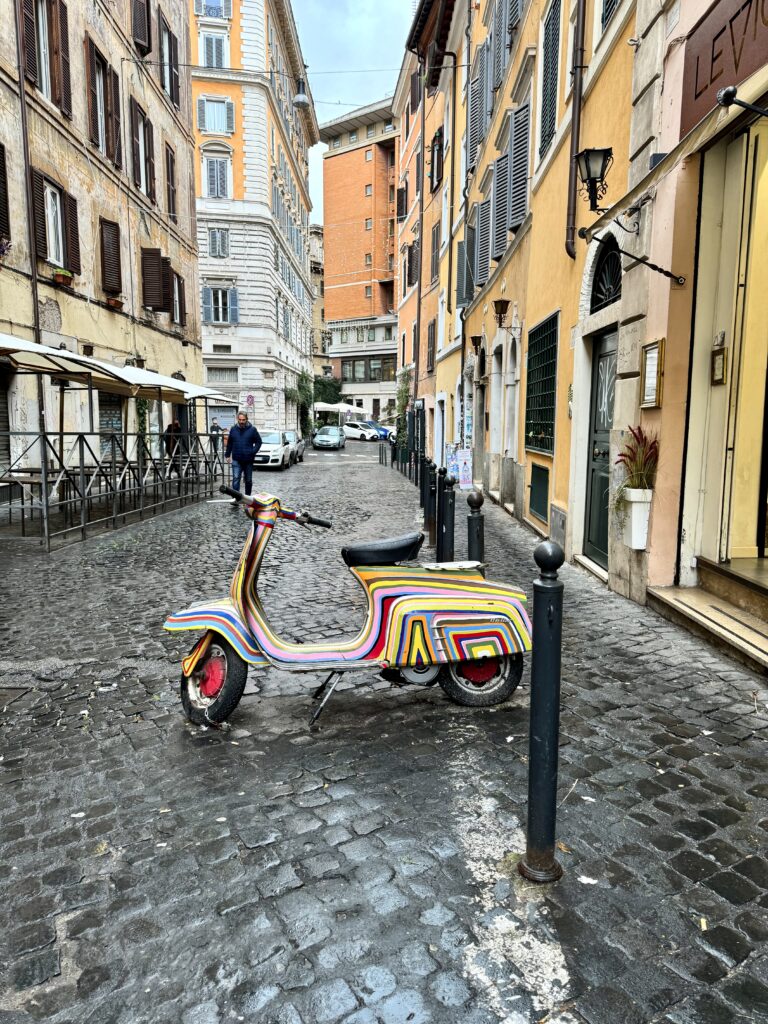
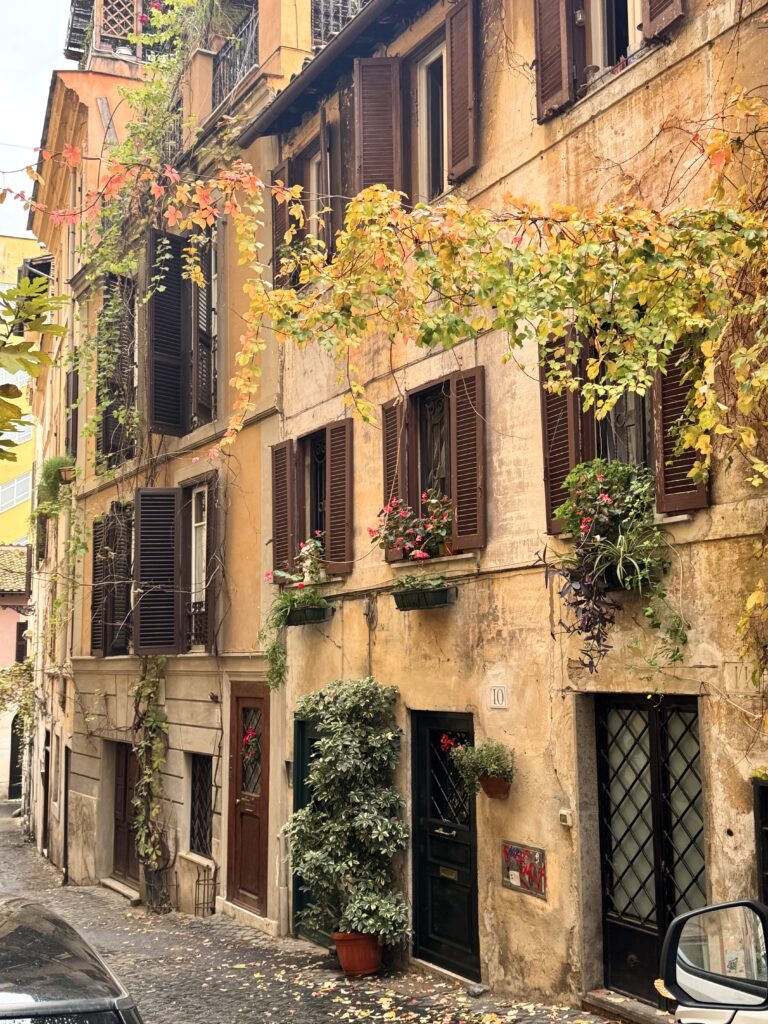
Monti
For dinner, stay in the Monti neighborhood. Monti is a charming and vibrant area known for its bohemian atmosphere, historic charm, and eclectic mix of modern and traditional.
On my last visit, I stayed in Monti and ate at three restaurants on Via Urbana that I would recommend — Pasta Urbana, Sciue Scieu Cucina, and Broccoletti.
For a pre-dinner apertivo, you can have a spritz at the fairytale-like cottage/bar called La Casetta. It has Christmas lights on all year.
>>> Click here to book a Monti food tour
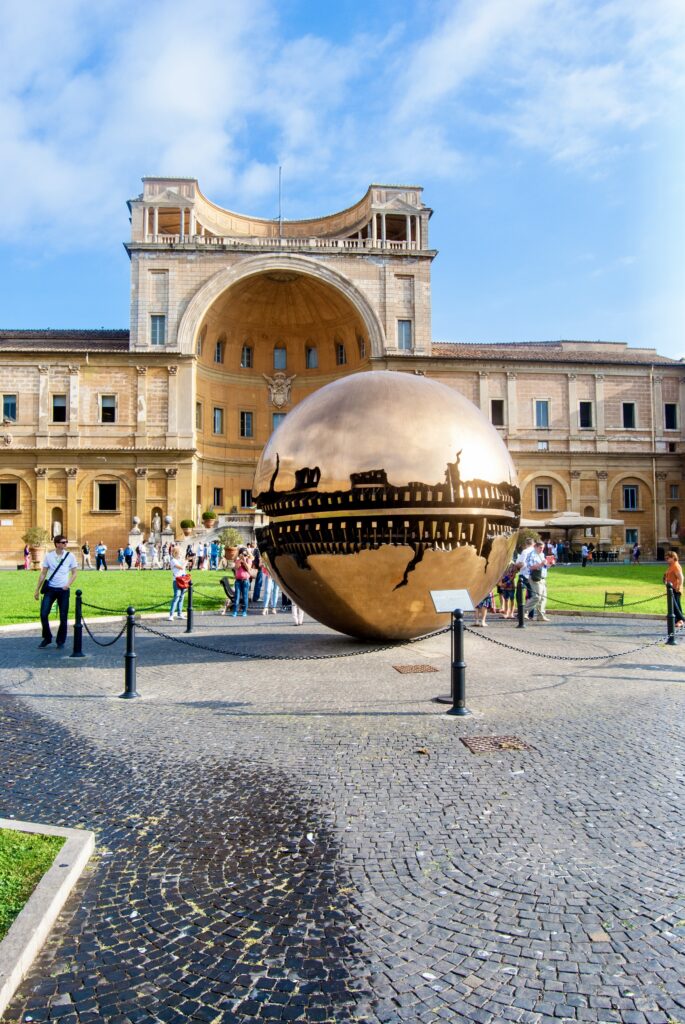
Vatican Museums
Start your second day in Rome at the Vatican Museums, which open at 8:30 am.
There are several ways to visit. You can pre-purchase a skip the line timed entry ticket (book early!) and visit on your own. This has the advantage of allowing you to proceed at a leisurely pace and see more things than are on a standard tour.
Alternatively, you can book a guided tour of the Vatican Museums or a tour of the Vatican Museum and St. Peter’s Basilica. This is a good option if you are a first time visitor and want to make sure you see the essential highlights.
The combo tour also allows you to skip the long security lines to get into the basilica. You enter the basilica from a door in the Sistine Chapel.
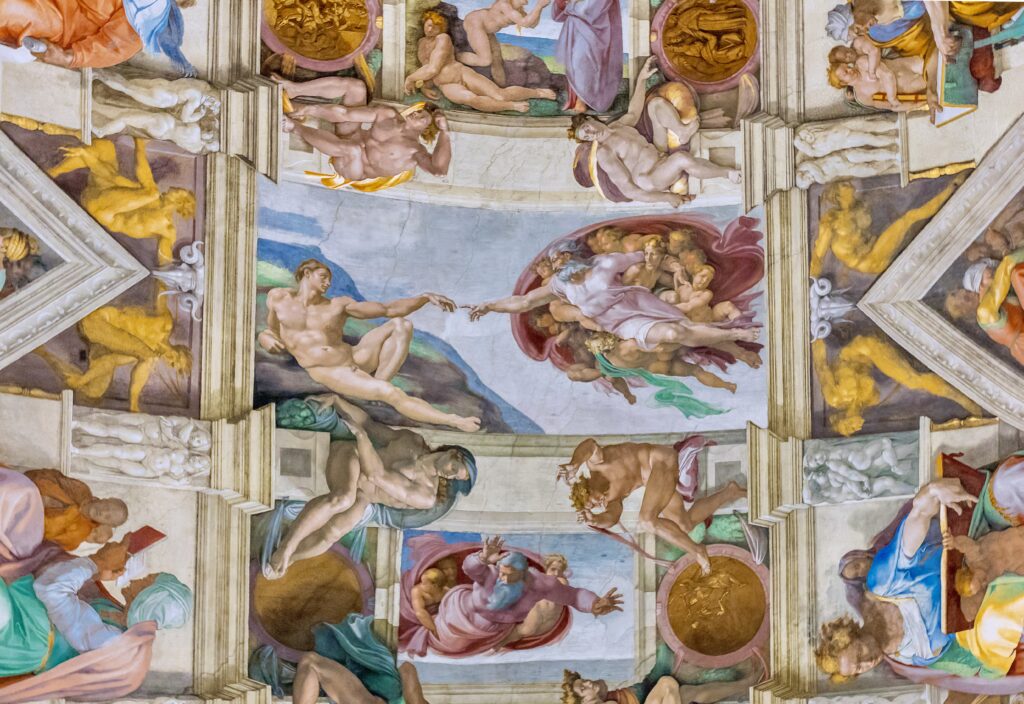
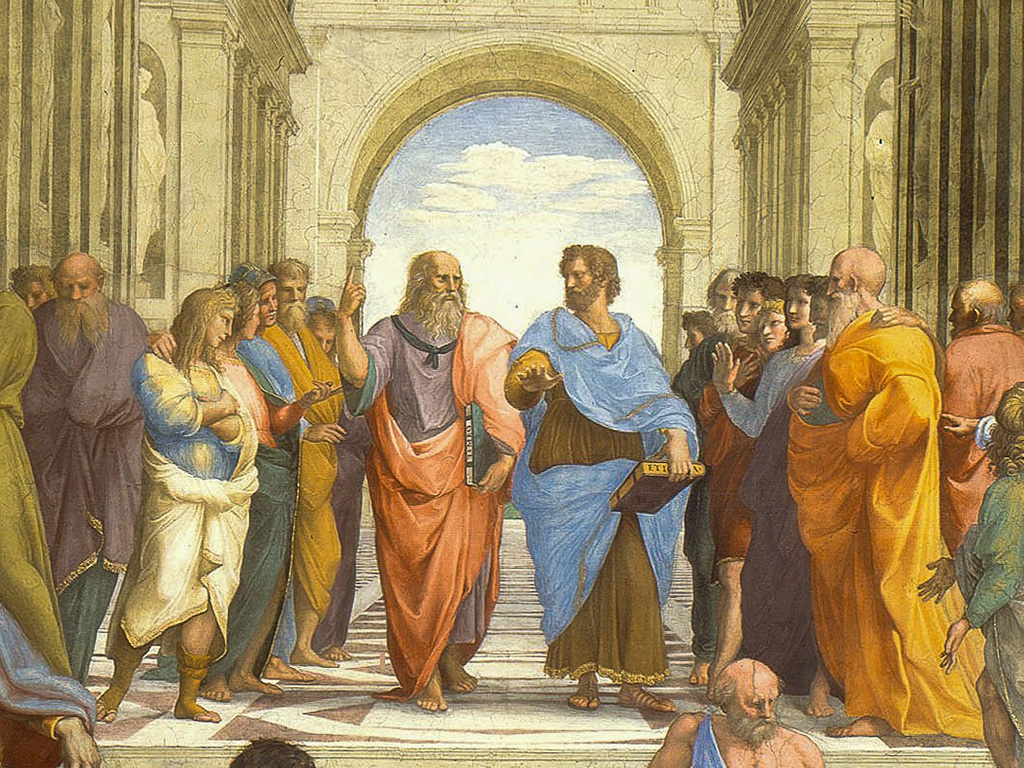
The Vatican Museums are among the most significant and renowned art museums in the world. They house a vast collection of artworks, ancient sculptures, and historical artifacts accumulated by the Catholic Church over centuries.
The collection spans from ancient Egyptian and Roman artifacts to Renaissance masterpieces. The Raphael Rooms are home to the artist’s best frescos, including his masterpiece School of Athens. The Vatican Pinacoteca is stuffed full of masterpieces.
The pièce de résistance, of course, is the world-famous Sistine Chapel with Michelangelo’s breathtaking ceiling and Last Judgment fresco. No photos are allowed here.
For the full scoop, you can check out my guide to the Vatican Museums.
Pro Tip: One way to avoid crowds at the Vatican is to go on a early bird tour or an evening tour.
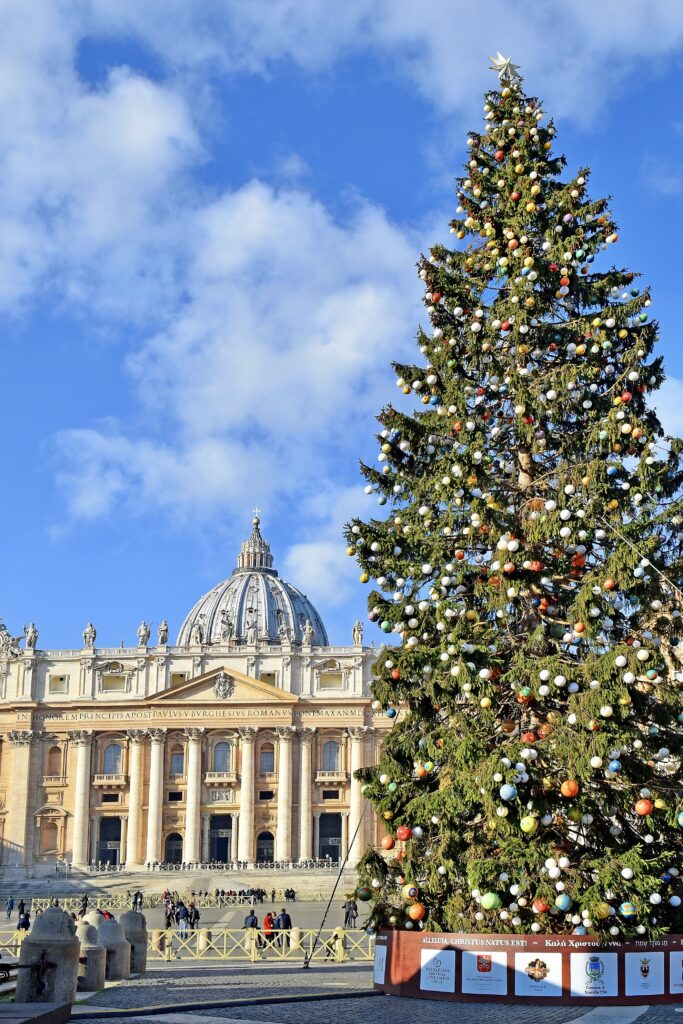
St. Peter’s Basilica
St. Peter’s Basilica is the greatest Christian church on earth. It represents the power and splendor of Rome’s 2,000 year domination of the Western world.
If you’re on a tour, you can, as I mentioned, enter through the Sistine Chapel. Otherwise, you’ll have to queue up at the security check in St. Peter’s Square. There is no skipping this line.
These lines are a bit of a bottleneck and can take awhile to get through. On my last visit in December, I spent 30 minutes in line to get into the basilica and 60 minutes waiting in another line to climb the dome.
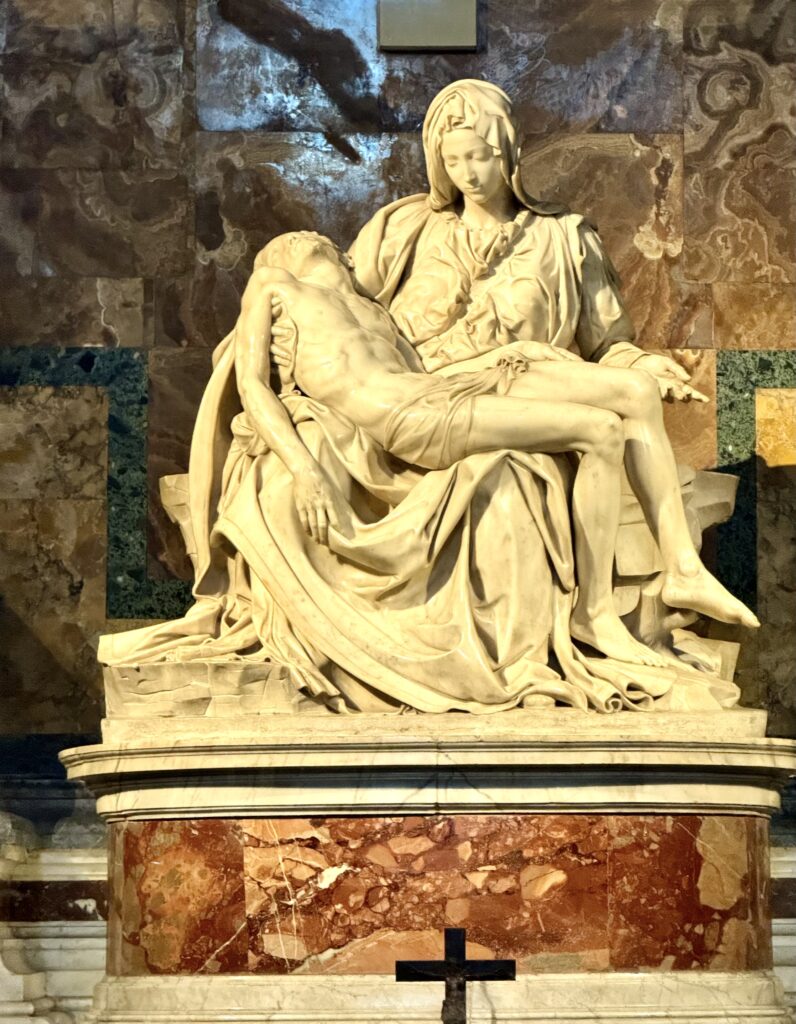
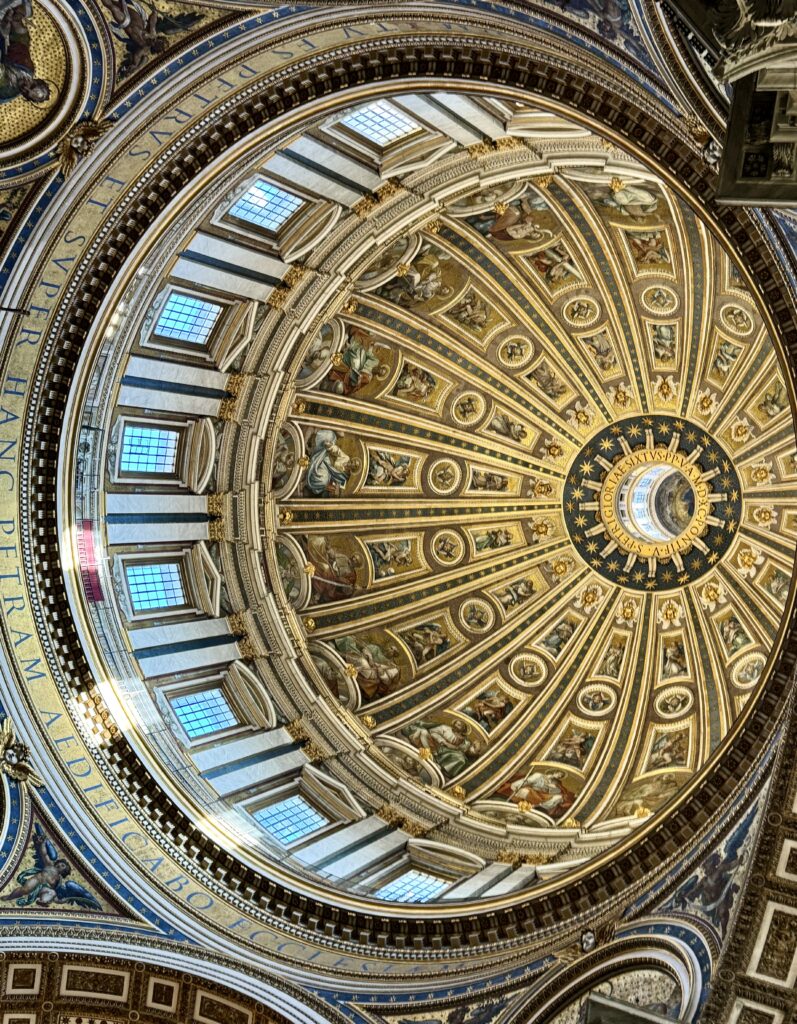
But it’s all worth it. St. Peter’s Basilica sits in St. Peter’s Square, a beautiful space designed by Bernini. Its ring of columns is meant to wrap you in a a motherly embrace.
Every aspect of the interior, from its colossal statues to the smallest details of its mosaics, reflects the basilica’s importance as a symbol of the Catholic Church and a repository of centuries of artistic achievement.
Upon entering, you’ll be immediately struck by the vastness of the nave and the intricate detail of its opulent decor. The basilica houses numerous artistic masterpieces, including Michelangelo’s Pietà.
The main altar is crowned by Bernini’s magnificent Baldachin, a towering structure made of bronze. The walls and ceilings are adorned with elaborate mosaics and the floors are a complex pattern of marble.
I highly recommend doing the dome climb. The views from the top are just staggering.
You can pre-book a dome ticket in advance or buy one inside the church. The entrance is on the left as you walk in.
You can hike up the 551 steps. Or you can take an elevator part way and hike up 320 steps.
At some points, the walls seems to lean into you. And there are some tight spiral steps. So, it may not be a good idea if you have any claustrophobia.
Vittoriano
From the Vatican, make your way to the “wedding cake” monument, the Altar of Peace in Piazza Venezia. It’s about a 25-30 minute walk from St. Peter’s or you can hop in a cab.
You can walk right up to the upper terraces for views and a closer look at the sculptures.
Alternatively, go around back and buy a ticket for the glass elevator. It will whisk up to the top where you’ll have one of the best panoramic vantage points in the city.
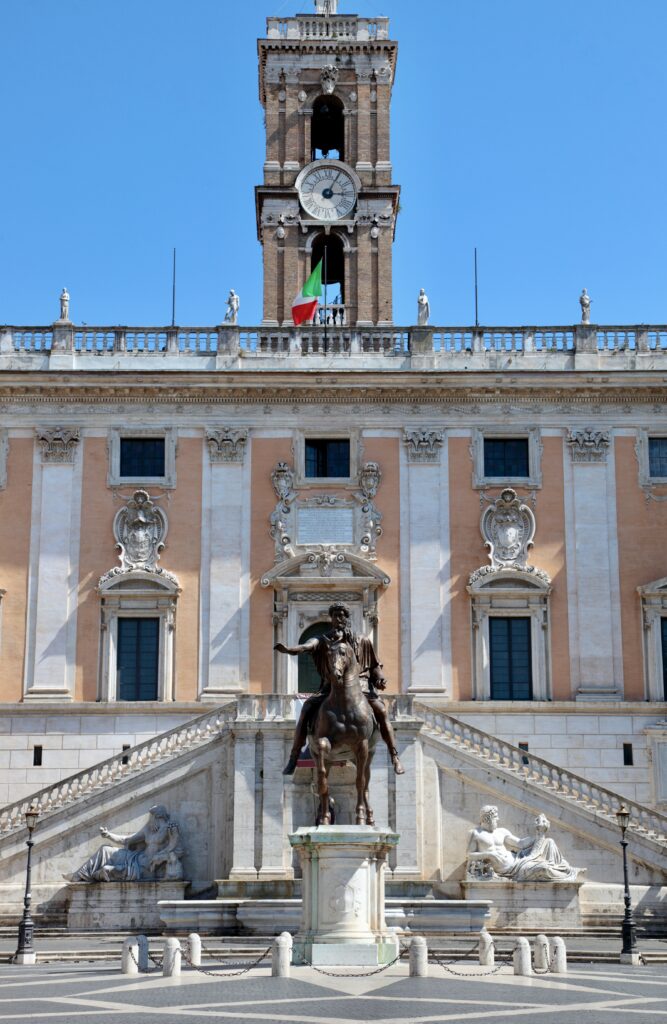
Capitoline Museums
After you’ve taken in the views, head to the Capitoline Museums on Capitoline Hill. It’s the most sacred of Rome’s seven hills and the center of the ancient city.
Head up the steps to Michelangelo’s Piazza del Campidoglio. The entrance to the museum is on your right.
There are three parts to the museum:
- (1) Greco-Roman sculptures on the ground floor
- (2) the picture gallery on the first floor
- (3) the tabularium where you’ll have amazing views over the Roman Forum
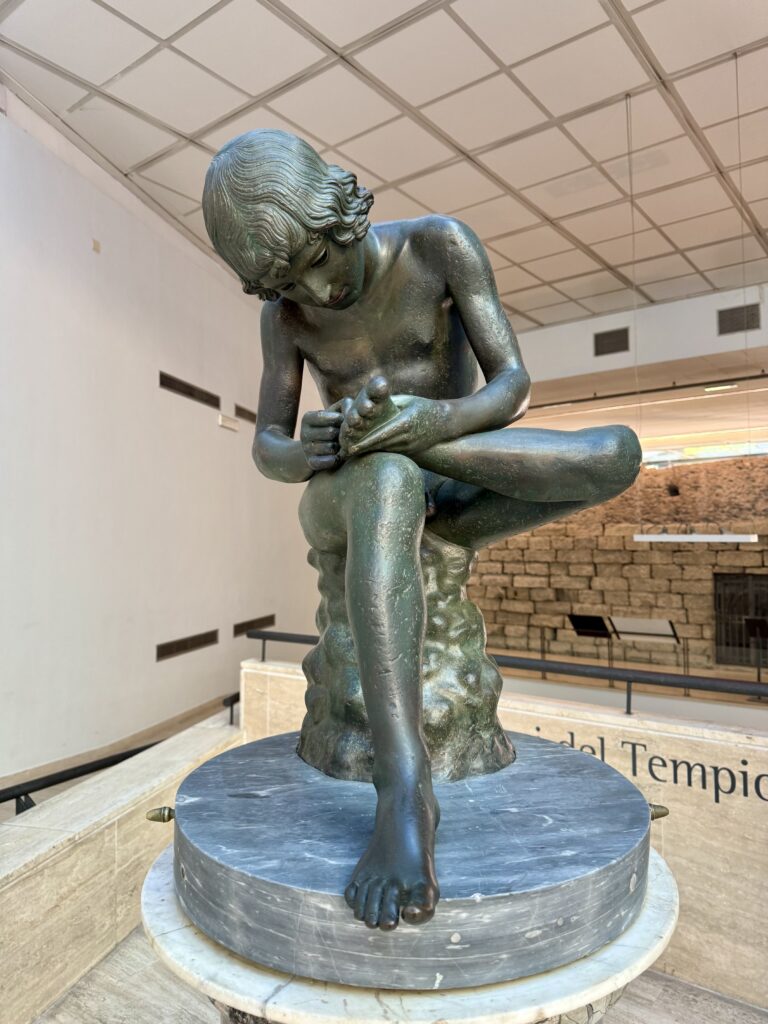
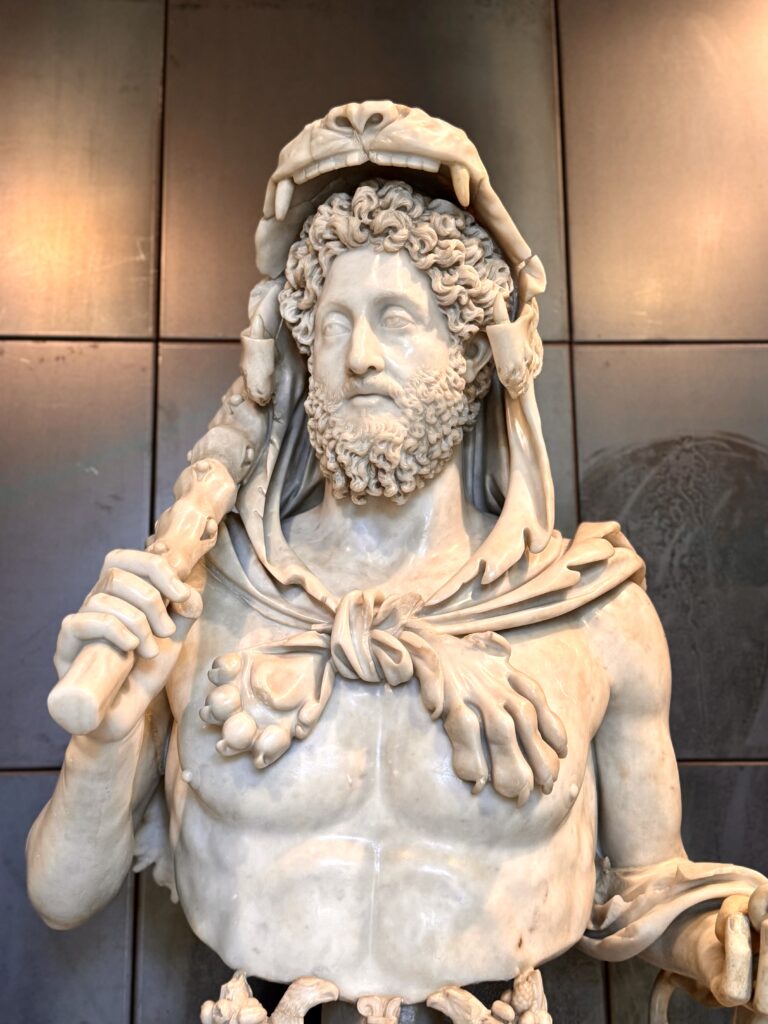
The museum has some simply amazing ancient sculptures — the Marcus Aurelius equestrian statue, the She-Wolf sculpture, and the Spinario. It’s also home to paintings by a young Caravaggio Guido Reni, and Guercino.
If you’re visiting off season, you won’t need to pre-book a Capitoline Museums ticket. But if it’s high season, you should definitely book a skip the line ticket.
It’s honestly worth visiting the museum just for the stunning views of the forum!
>>> Click here to book a private tour of the museum
Mouth of Truth
On your way to your next stop, the Jewish Ghetto, you’ll pass by the Mouth of Truth in the Basilica of Santa Maria in Cosmedin.
It’s an ancient marble mask that has a legend associated with honesty and truth-telling. According to the legend, if a person tells a lie while their hand is in the mouth of the sculpture, it will be bitten off.
If there’s a long line, I’d say it’s entirely skippable. Plus, you can get a good look at it through the openings.
Across the street, you can spy the temples of the Forum Boarium and the Theater of Marcellus.
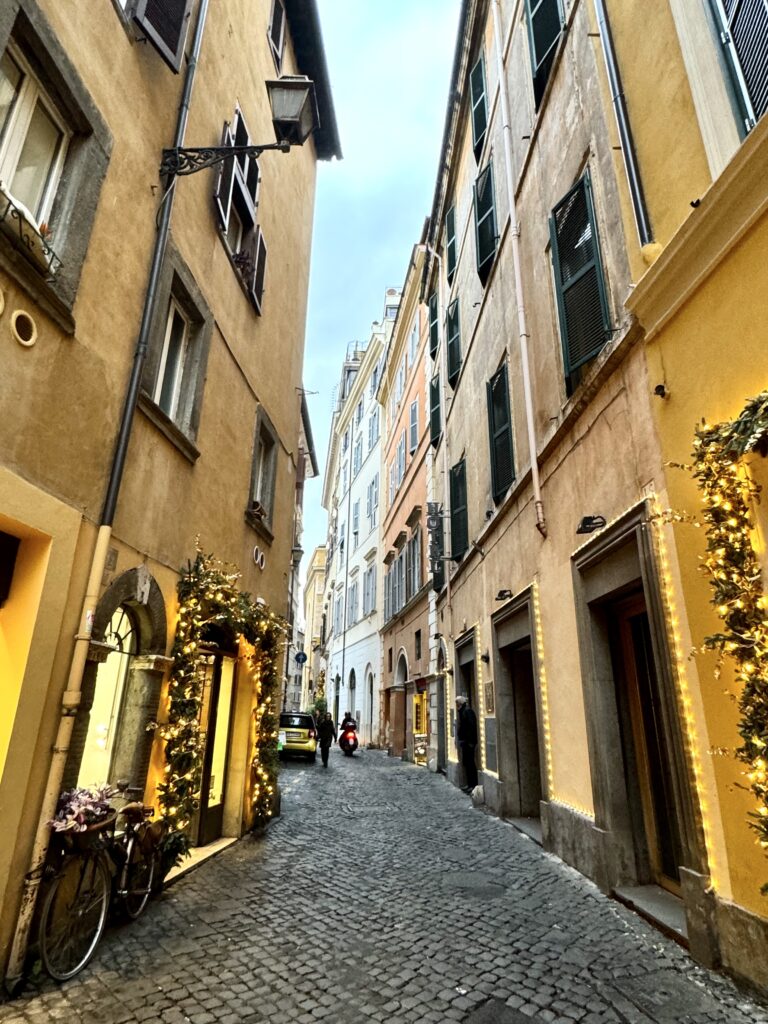
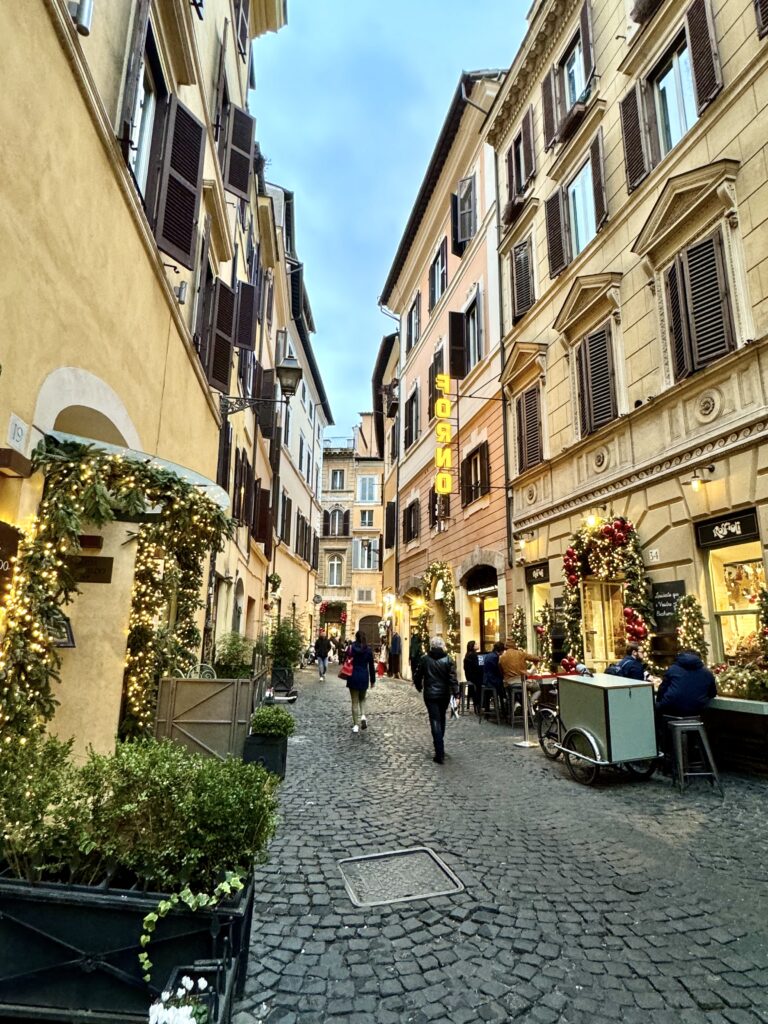
Jewish Ghetto
The Jewish Ghetto, established in 1555, is one of the city’s most historic and culturally rich neighborhoods. it was the forced home of Rome’s Jewish population for over 300 years.
The heart of the ghetto is Via del Portico d’Ottavia. This lively street is a hub of activity and is lined with kosher restaurants and bakeries. Via della Reginella and Via del Tempio are also especially charming.
At the end of Via della Reginella in Piazza Mattei, you’ll find a fun turtle fountain. It’s an old Mannerist work that was later embellished with turtles by Bernini.
The Great Synagogue of Rome, located on the Lungotevere de’ Cenci, is a major landmark. Nearby, the Jewish Museum of Rome tells the story of the Roman Jewish community, which is among the oldest in Europe.
>>> Click here to book a guided walking tour of the Jewish Ghetto
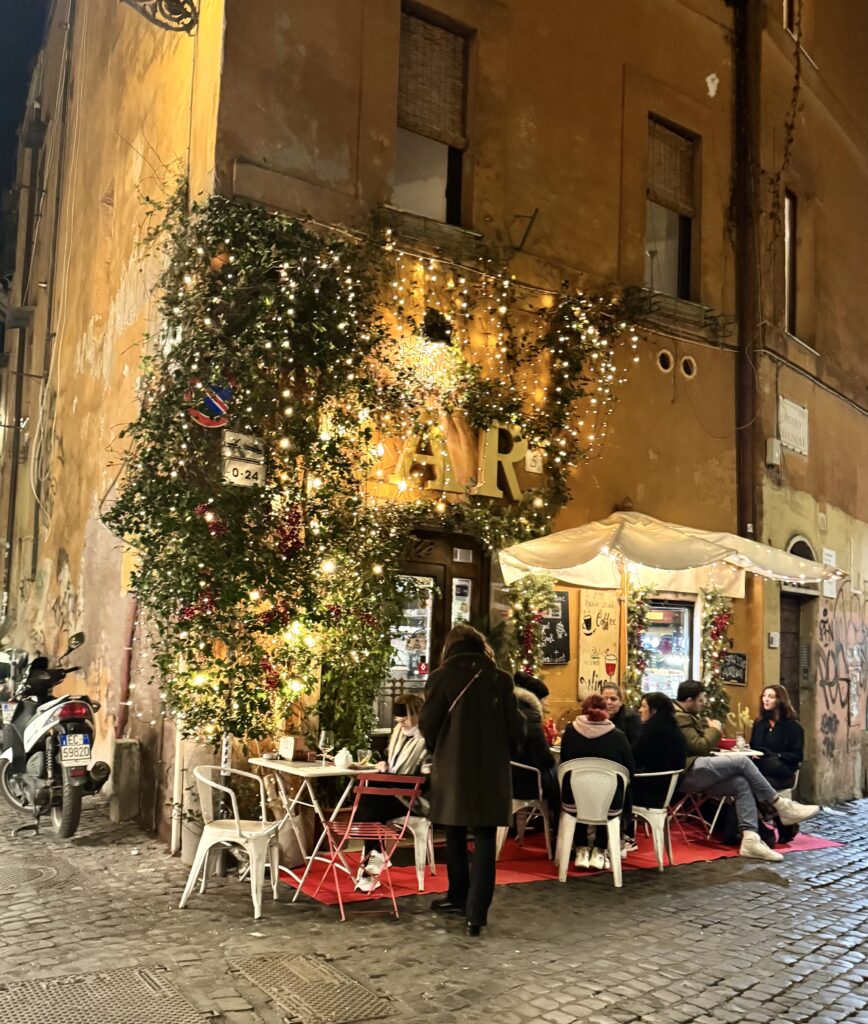
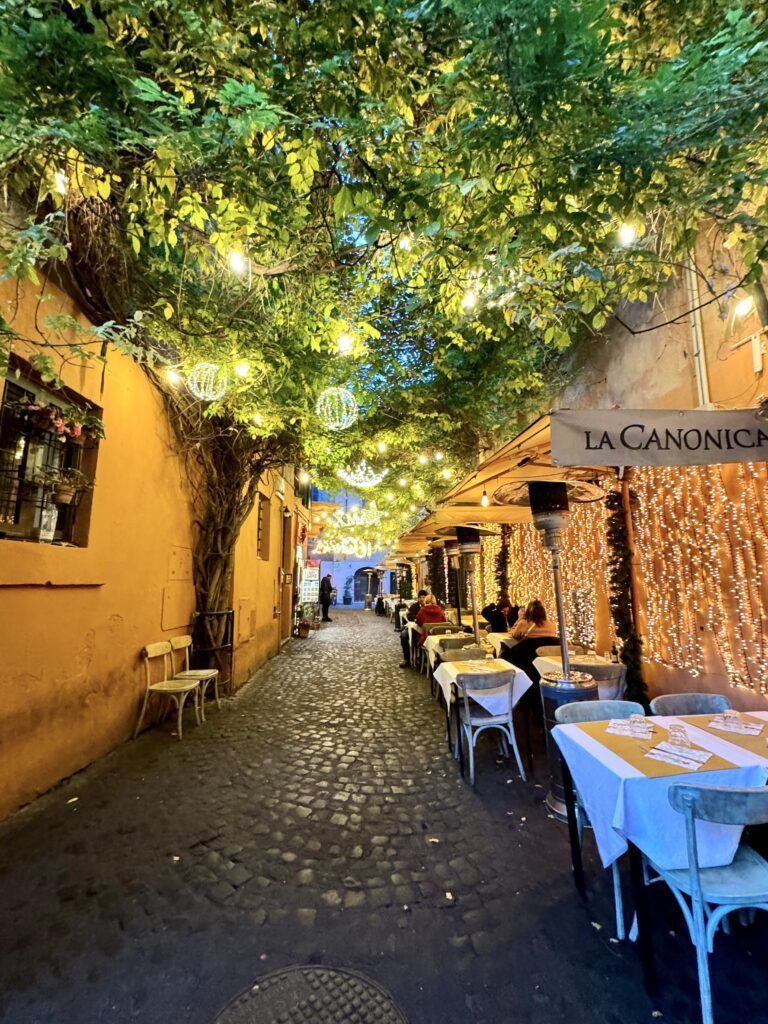
Trastevere
From the Jewish Ghetto, walk about 10 to 15 minutes to the beautiful Trastevere neighborhood. Cross the river via the Ponte Garibaldi bridge, which offers up lovely views.
Trastevere is a picturesque village within a city. With its pastel facades, the neighborhood has the laidback vibe of small town Italy.
The heart of Trastevere is the lively Piazza di Santa Maria. It’s home to the Santa Maria Basilica, which is the oldest church dedicated to Mary in Rome. There are gorgeous 12th century mosaics in the apse.
There are some charming streets to wander — Vicolo della Luce, Vicolo del Buco, Vicolo del Cinque, Via dell’Arco di San Calisto, Via in Piscinula, Vicolo del Piede, and Via Titta Scarpetta.
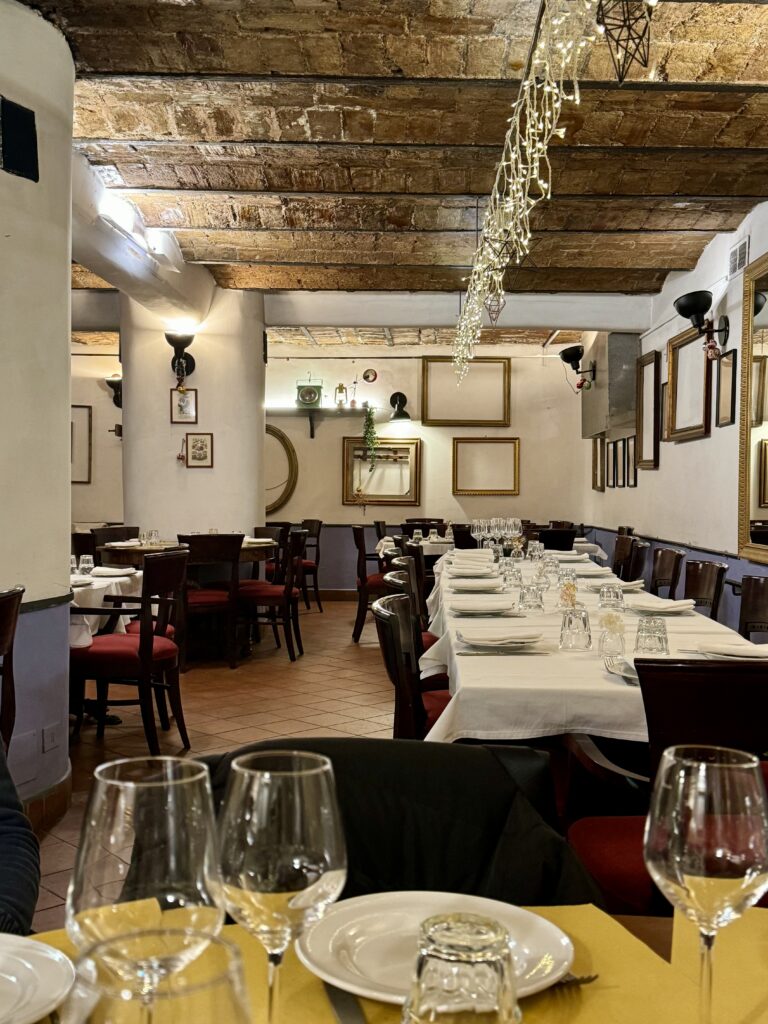
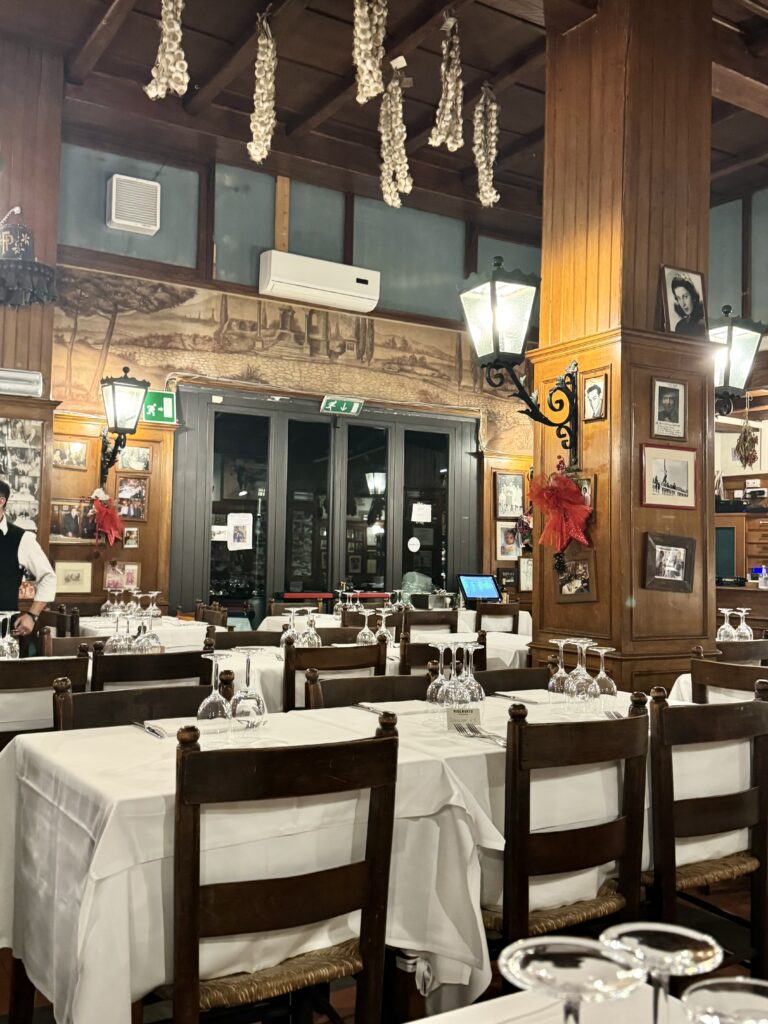
Trastevere is a great place to have dinner or go on a food tour.
I recently took an evening food tour with Devour Food.
My guide was Mattia and he took us to the non-touristy places. We had apertivos at La Vita Enocoteca and Enoteca Roloco, sampled suppli, and dined on pasta specialities at Checco Er Carettiere.
I’ve stayed in Trastevere on prior visits, so am familiar with the restaurants as well. For the best eateries, I recommend checking out Zia, Ristorante la Tavernaccia da Bruno, and Le Mani.
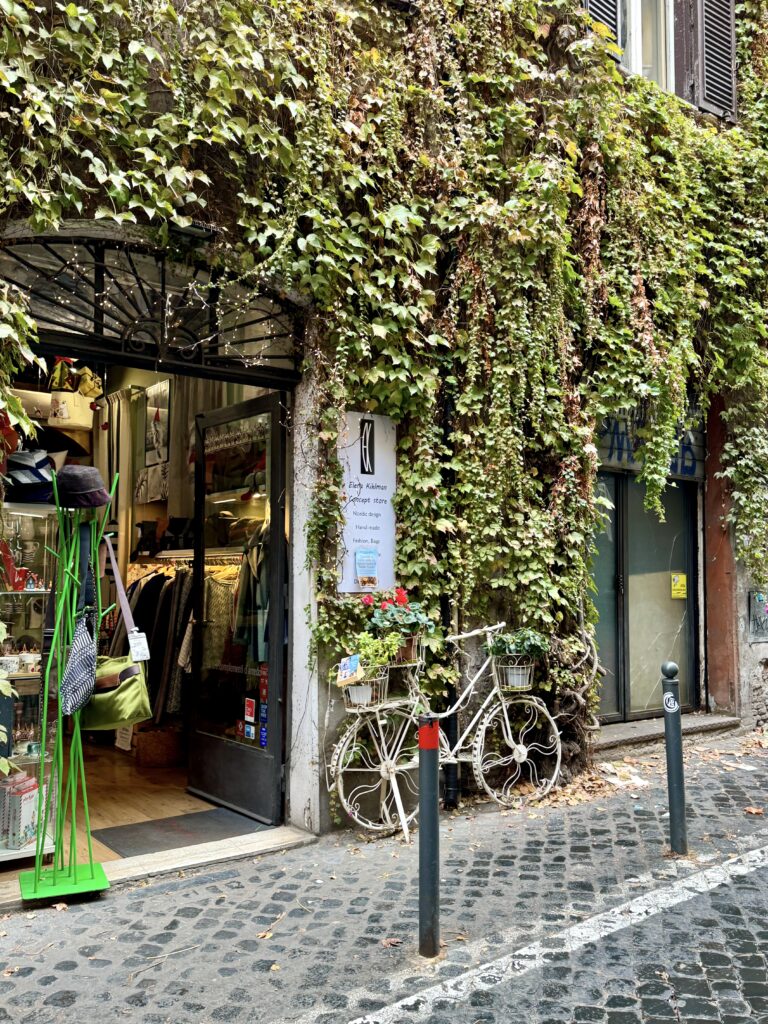
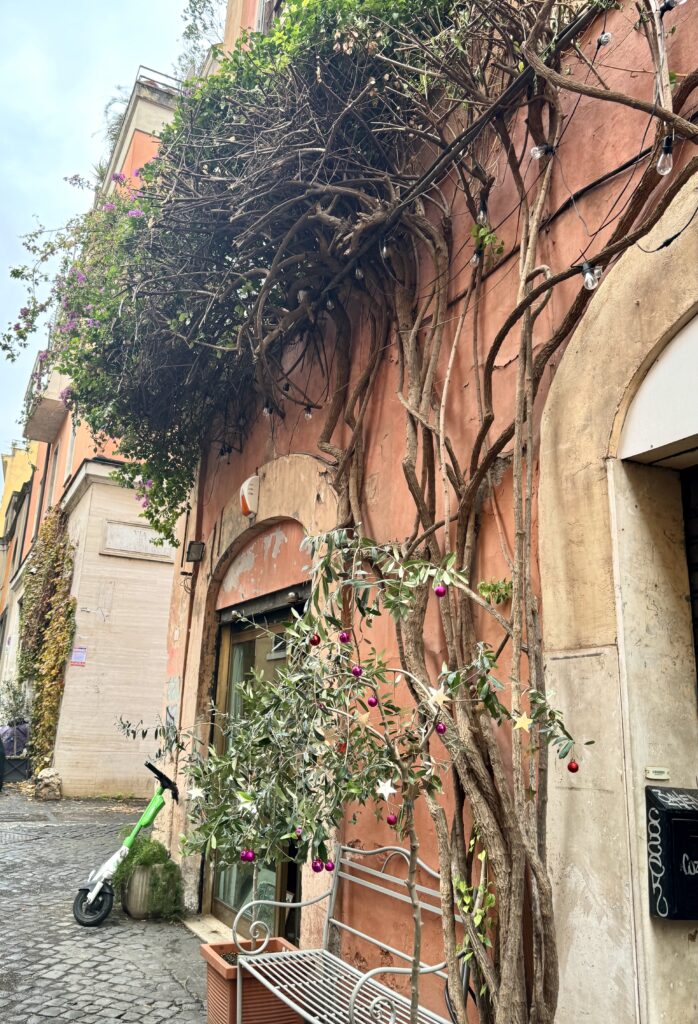
Tips For Spending 2 Days in Rome
How To Get To Rome
You’ll likely fly in to Fiumicino Airport. You can take a taxi into town, but expect long lines. For this reason, I usually book a private transfer.
You can also take the train from the airport. The Leonardo Express leaves every 15 minutes from the Felice Santini train station near the airport.
It drops you off in Rome’s Termini Station, which is in northeast Rome. Click here to book a round trip ticket.
How To Get Around Rome
It’s really best to walk your way around Rome. You’ll see more things and bump into some hidden gems.
You can also use the metro, although there are only two functioning lines. There are taxis at designated taxi stands near major sites.
You can also try something fun like an e-bike tour or a Segway tour.
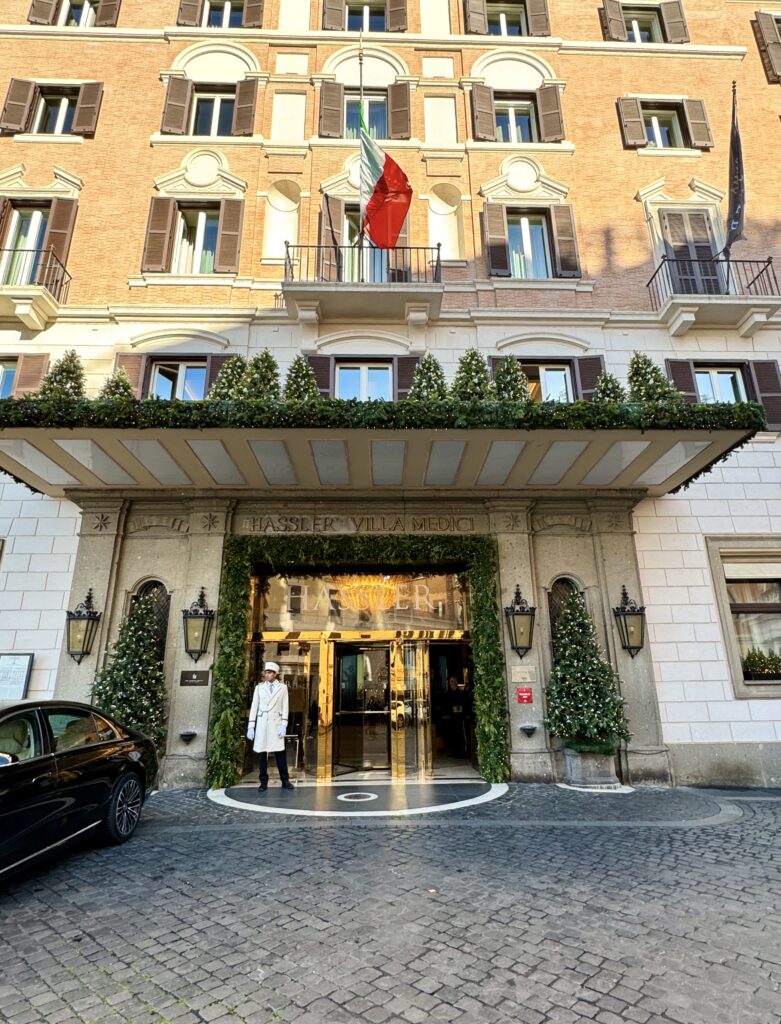
Where To Stay In Rome
There are no shortage of amazing places to stay in Rome. I stay somewhere different each time I visit. With only 2 days in the city, I recommend staying somewhere central.
I have a soft spot for the Hotel Hassler Roma near the Spanish Steps. The Palazzo Manfredi is another great hotel with views of the Colosseum and the Roman Forum from its rooftop restaurant.
I’m also fond of Hotel Maalot. It’s a small luxury hotel in a restored palazzo not far from the Trevi Fountain. There are chic colorful rooms and a great restaurant.
On my last visit, I stayed in a rather artsy boutique hotel, the Elizabeth Unique Hotel. It’s housed in a restored 17th century palazzo in the heart of the historic center.
And that’s a wrap for my 2 days in Rome itinerary. You may find these other Rome travel guides useful:
- 8 Ways To Spend 1 days in Rome
- 5 Days in Rome Itinerary
- Hidden Gems in Rome
- Best Day Trips From Rome
- Rome’s Palace Museums
- Bernini Guide to Rome
- Caravaggio Guide to Rome
- Guide to the Best Museums in Rome
- Guide To the Doria Pamphilj Gallery
- Must See Archaeological Sites & Ruins
- 50 Facts About Rome
If you want to spend 2 days in Rome, pin it for later.

